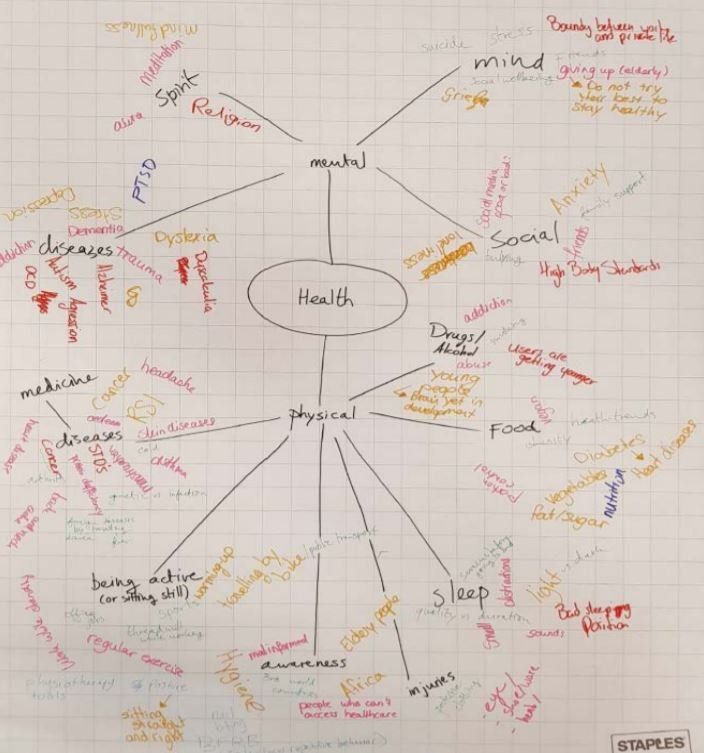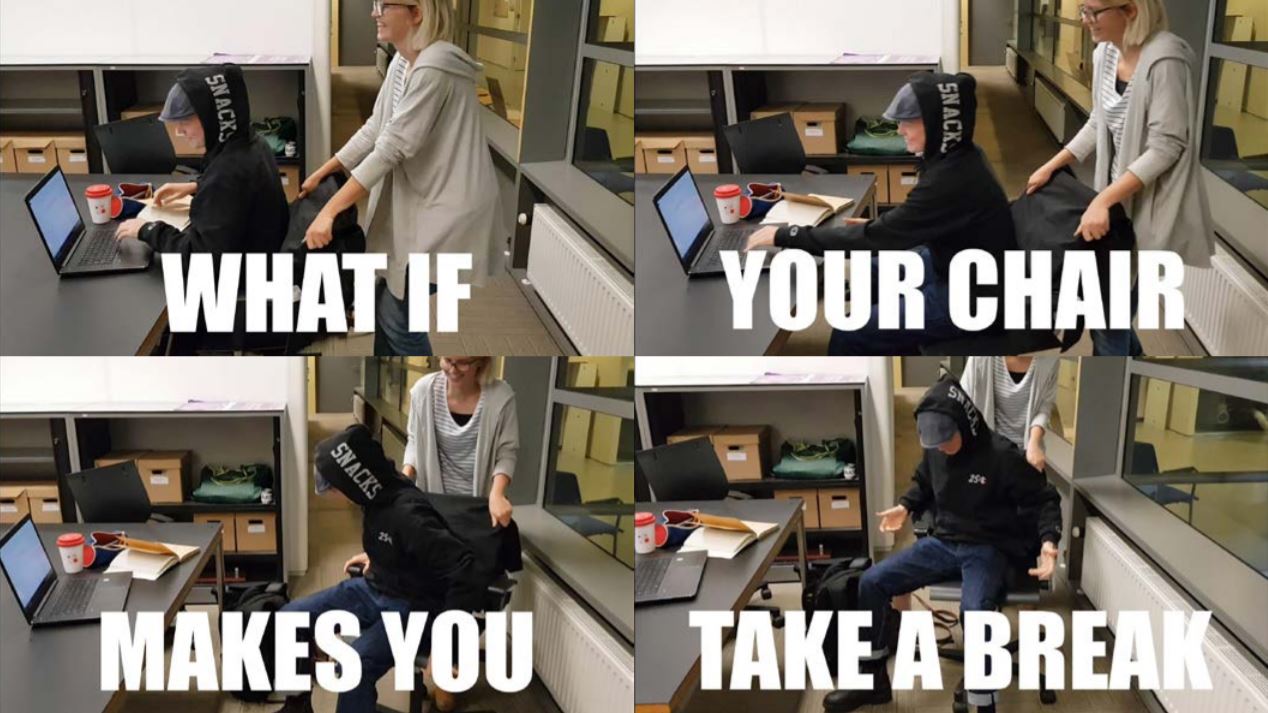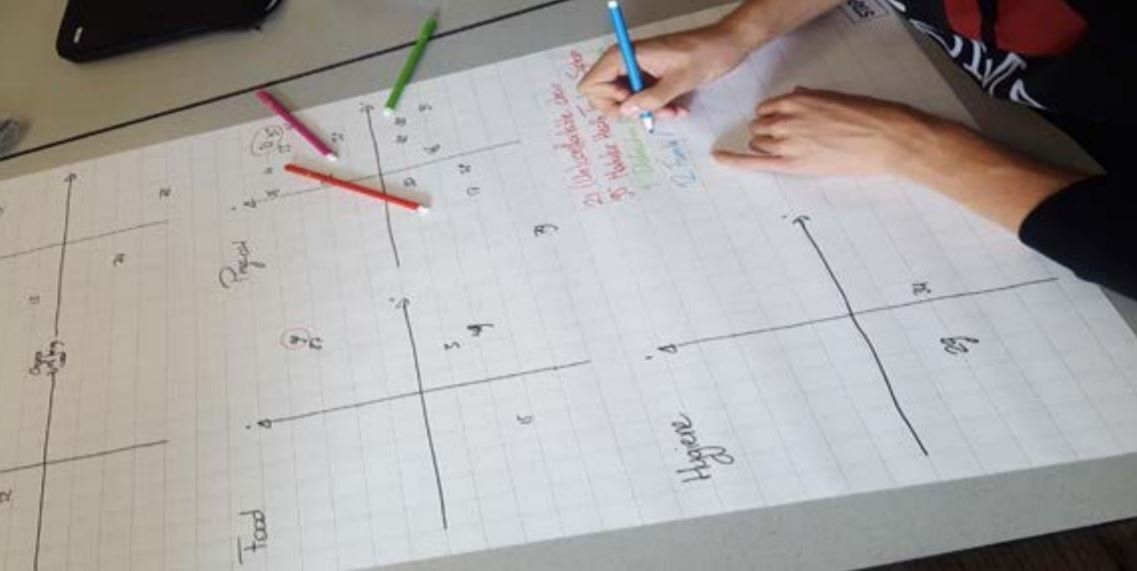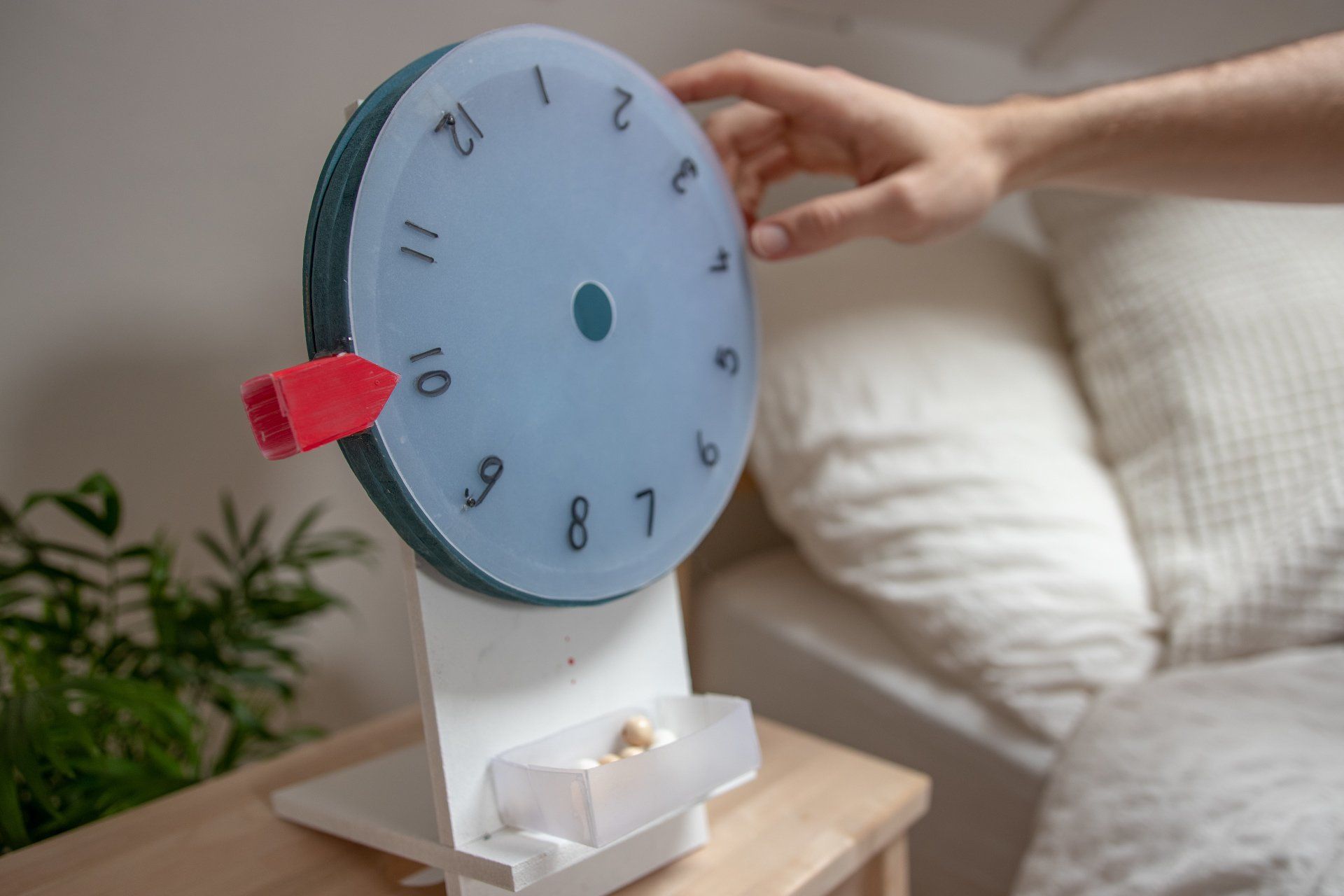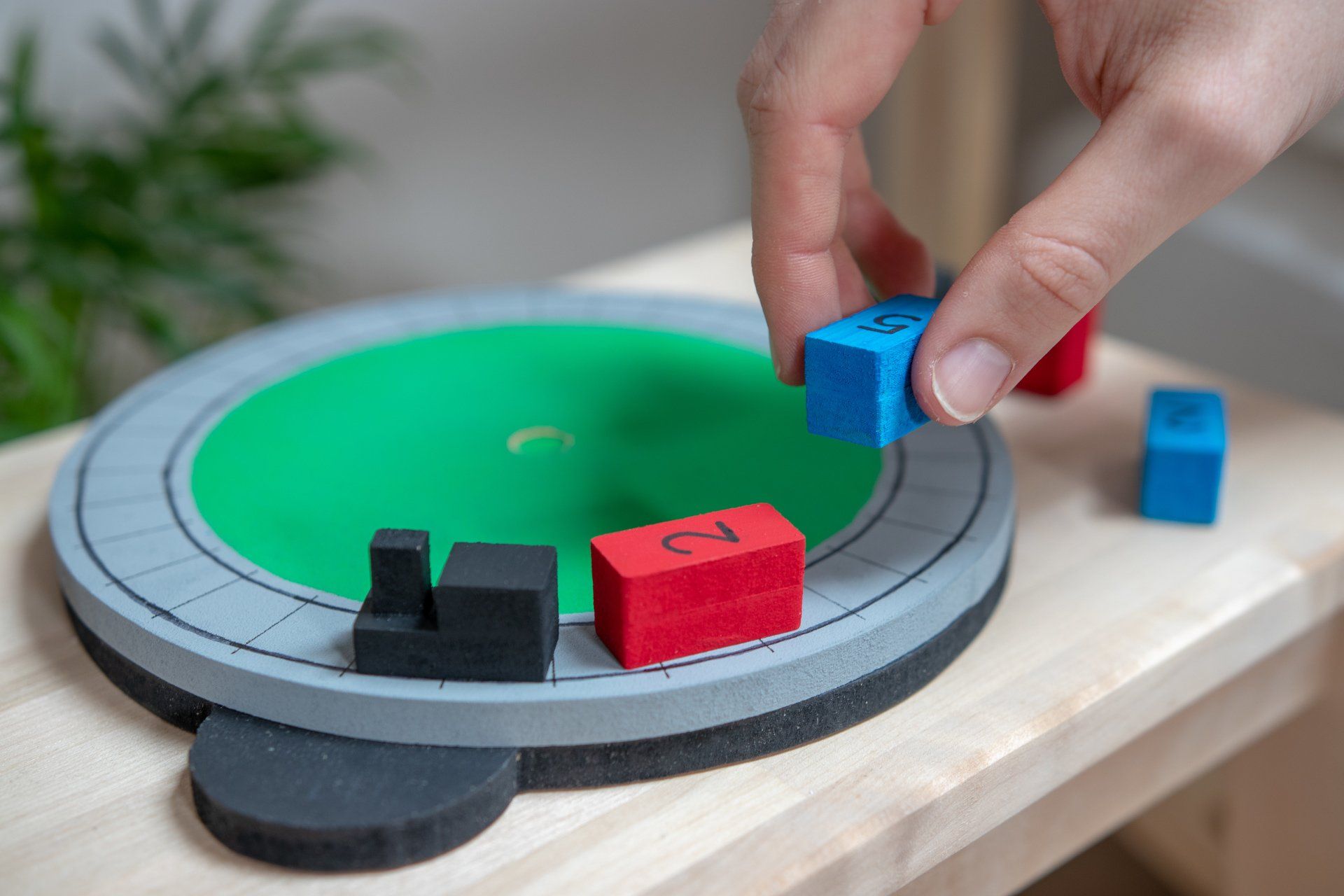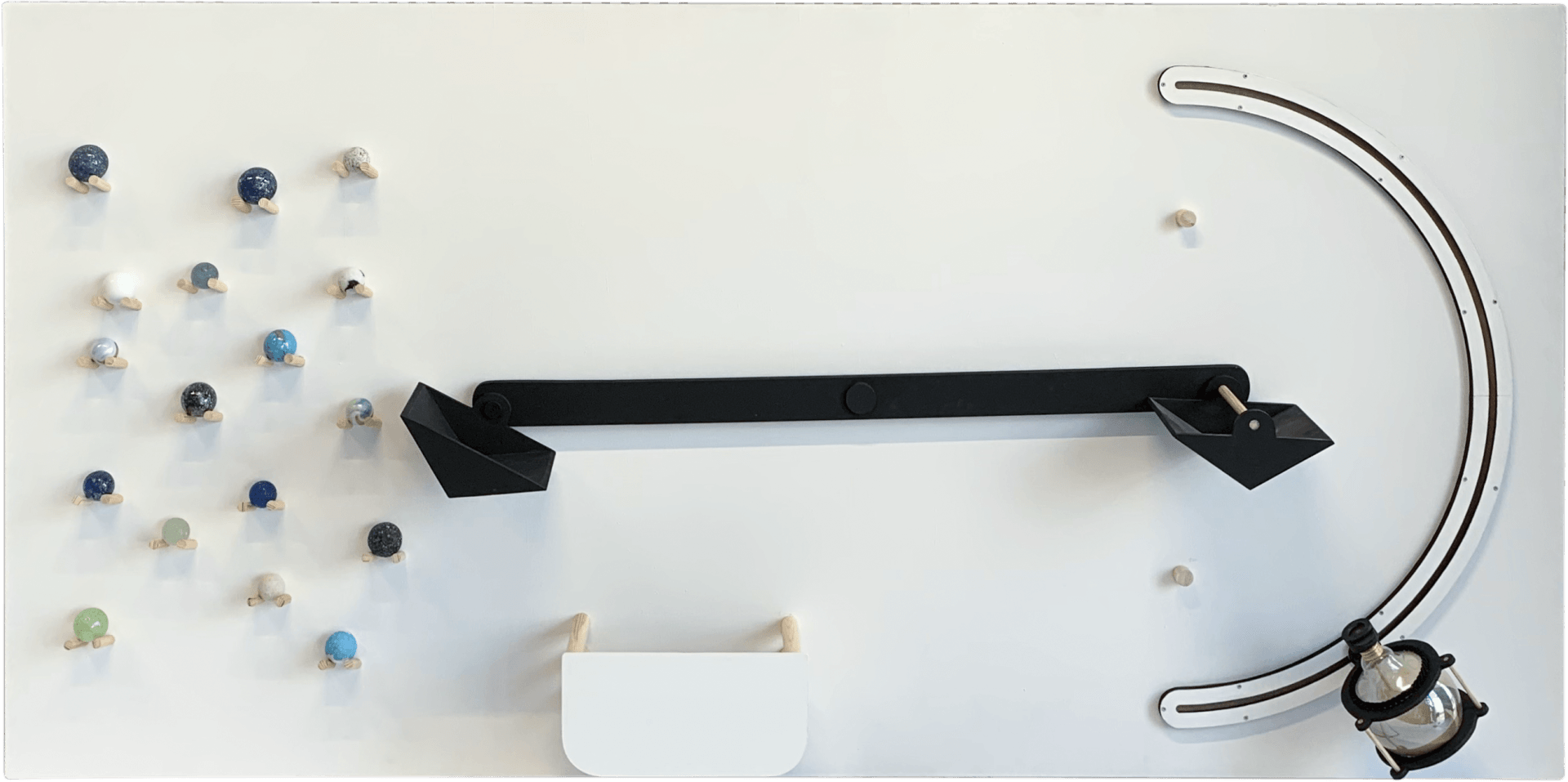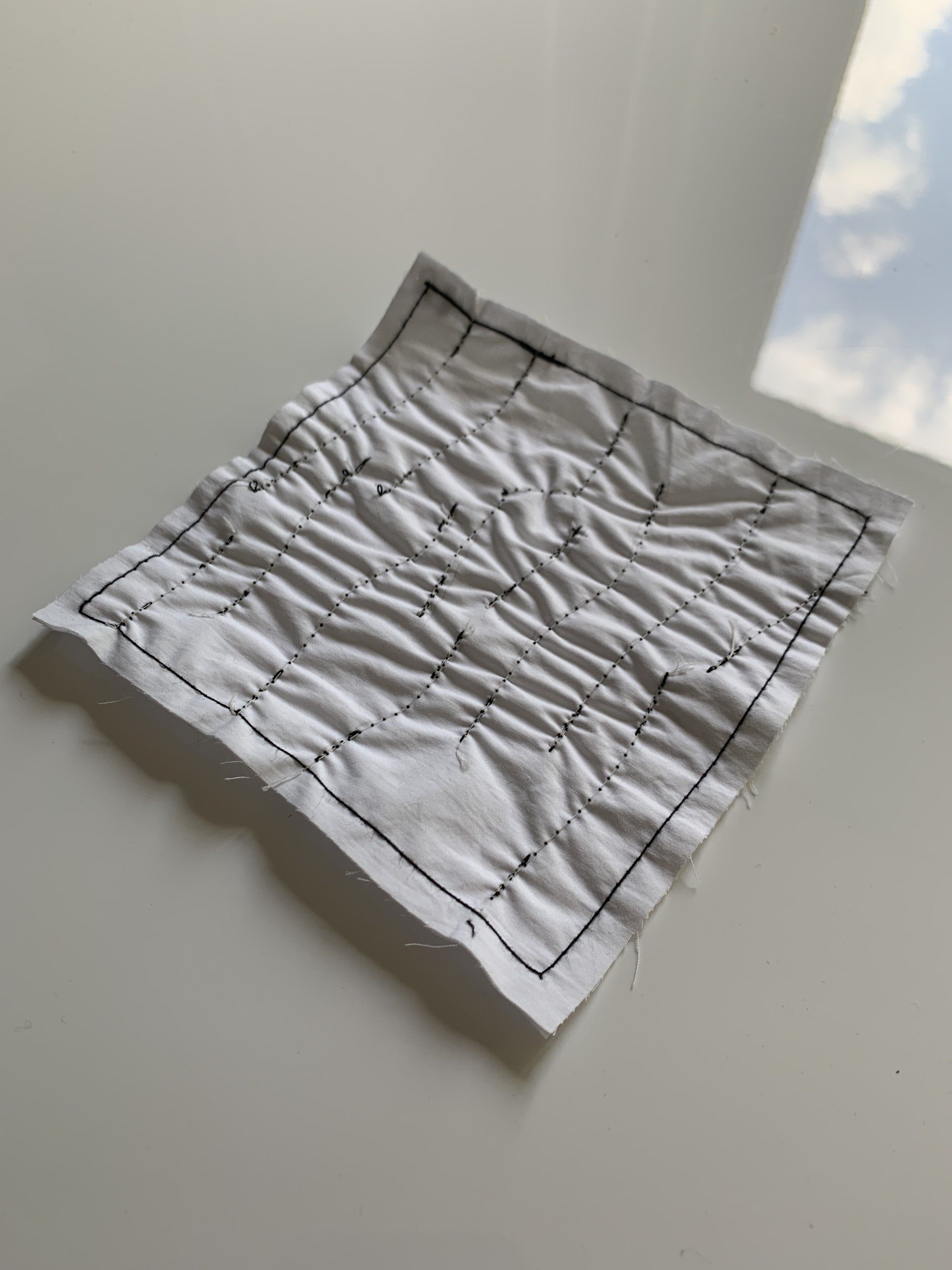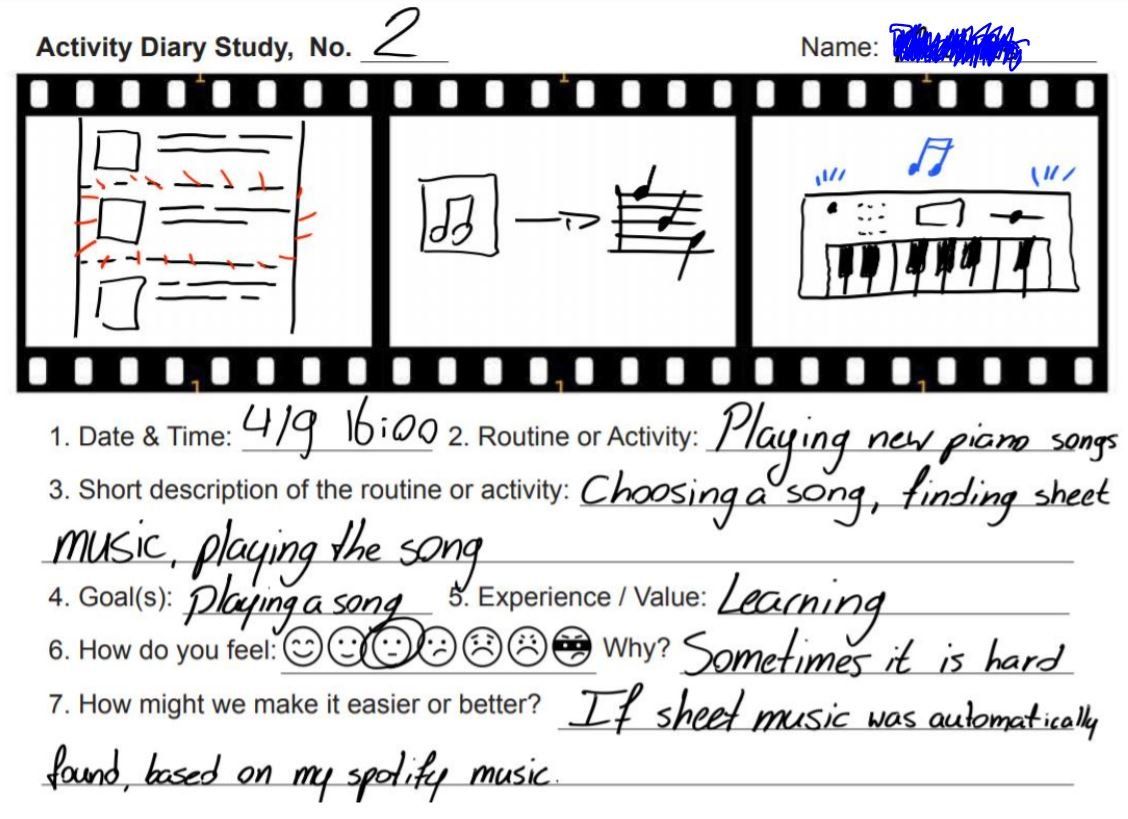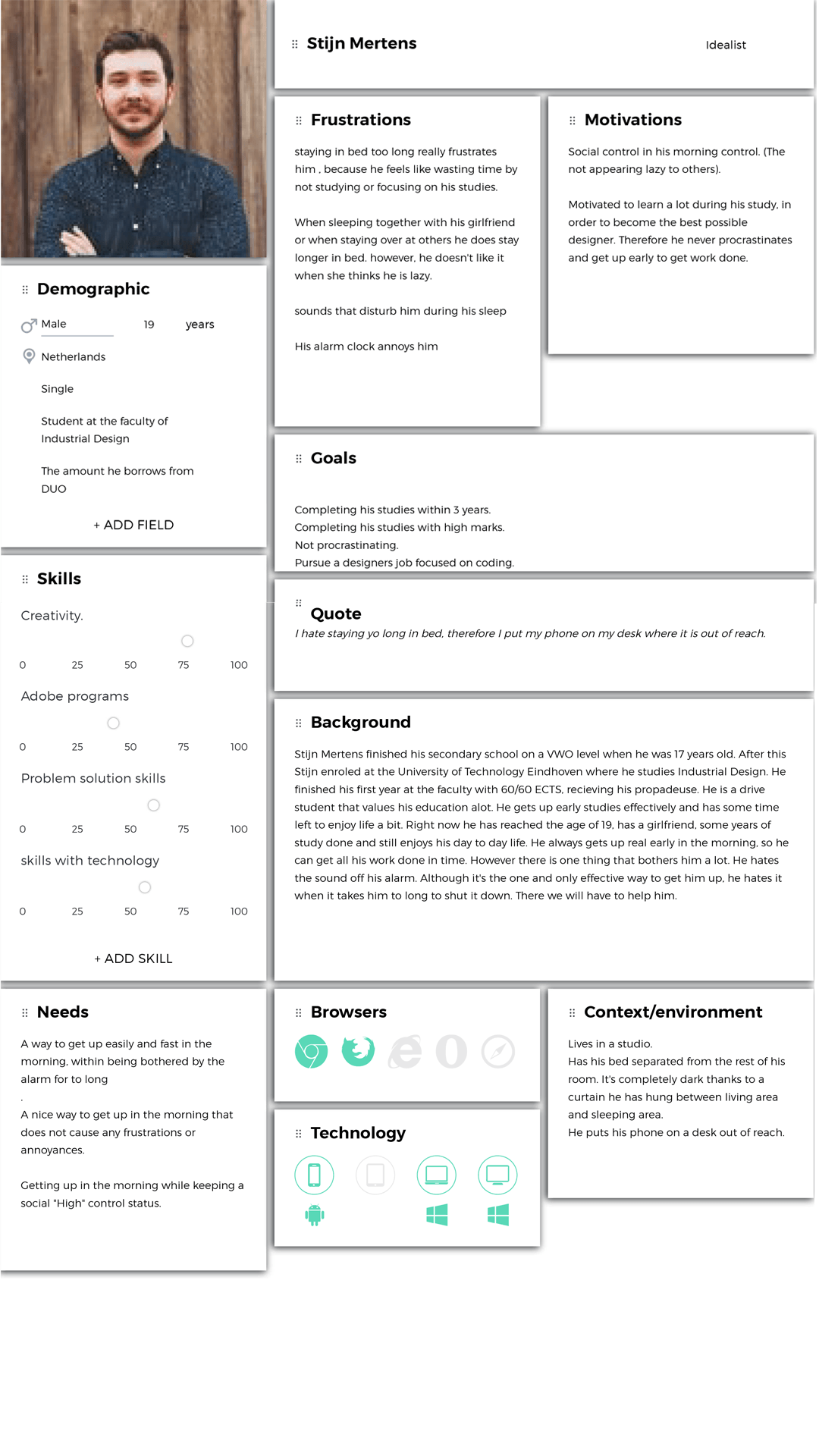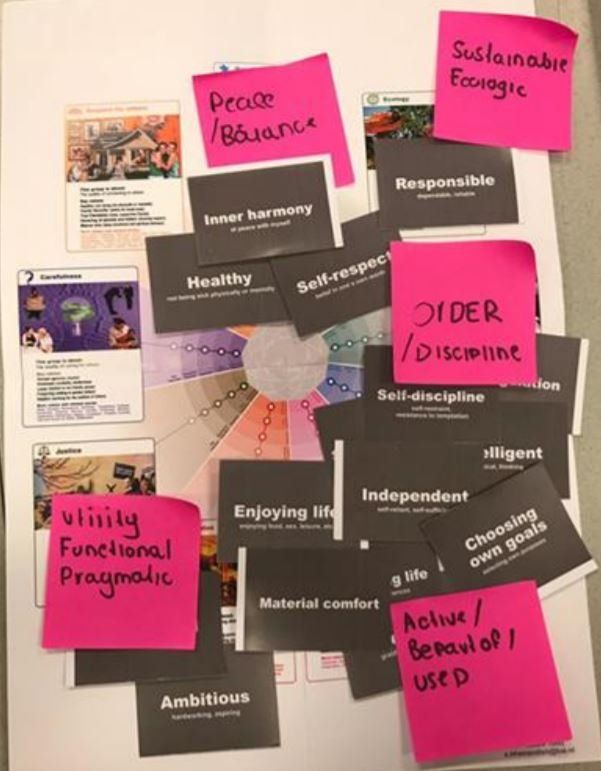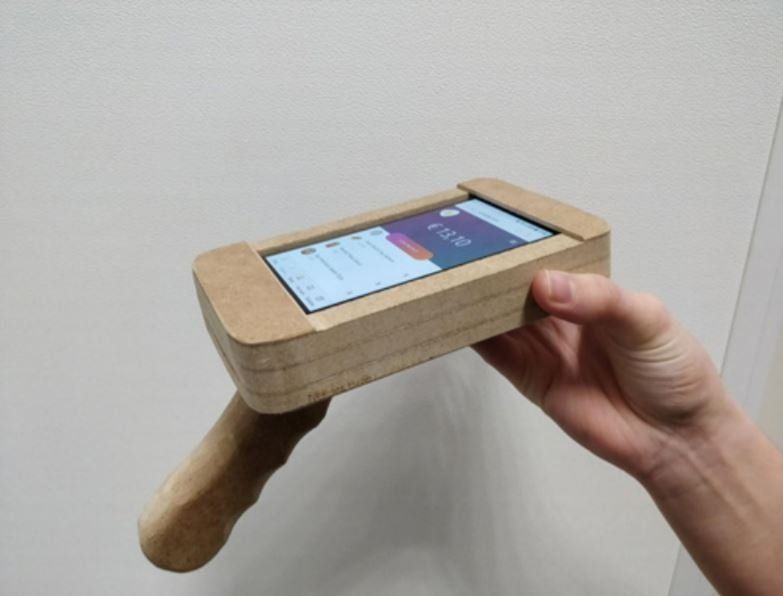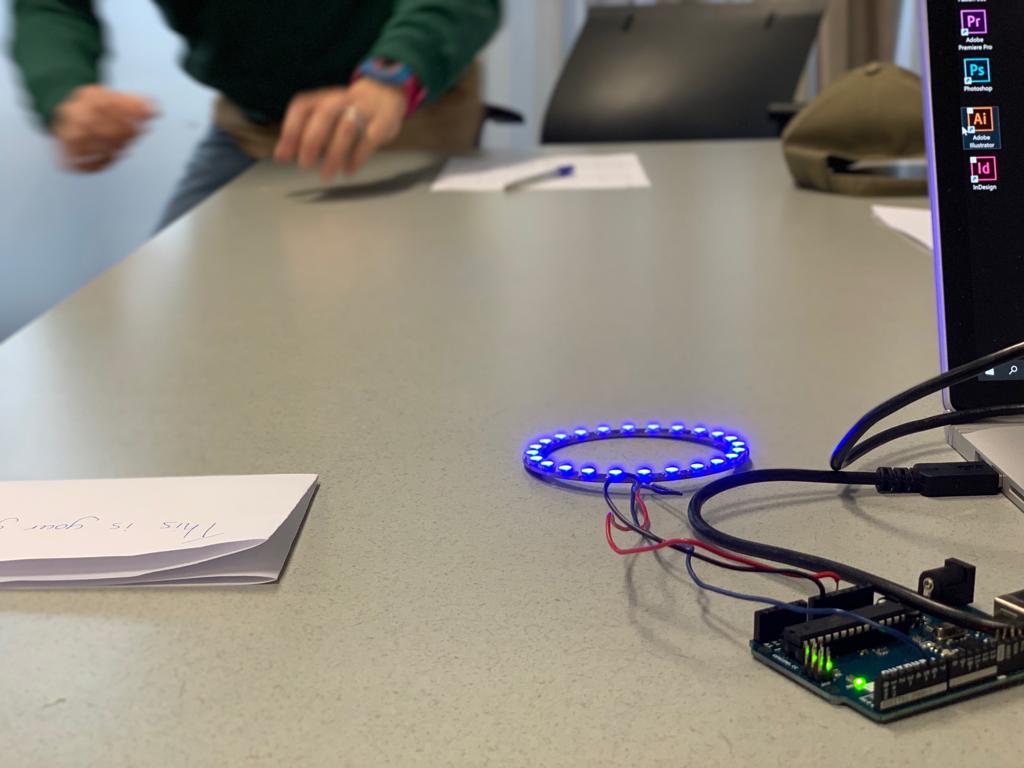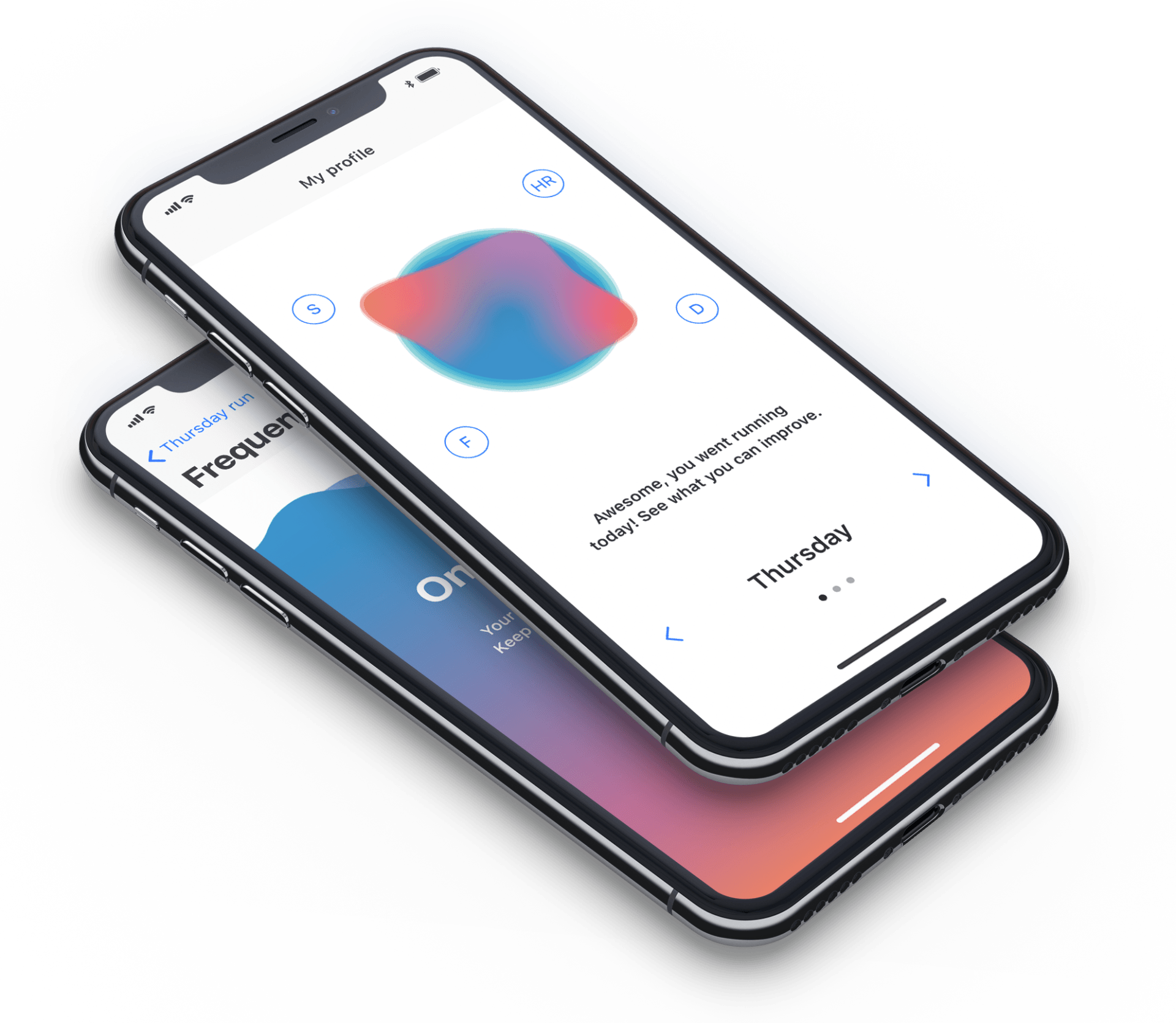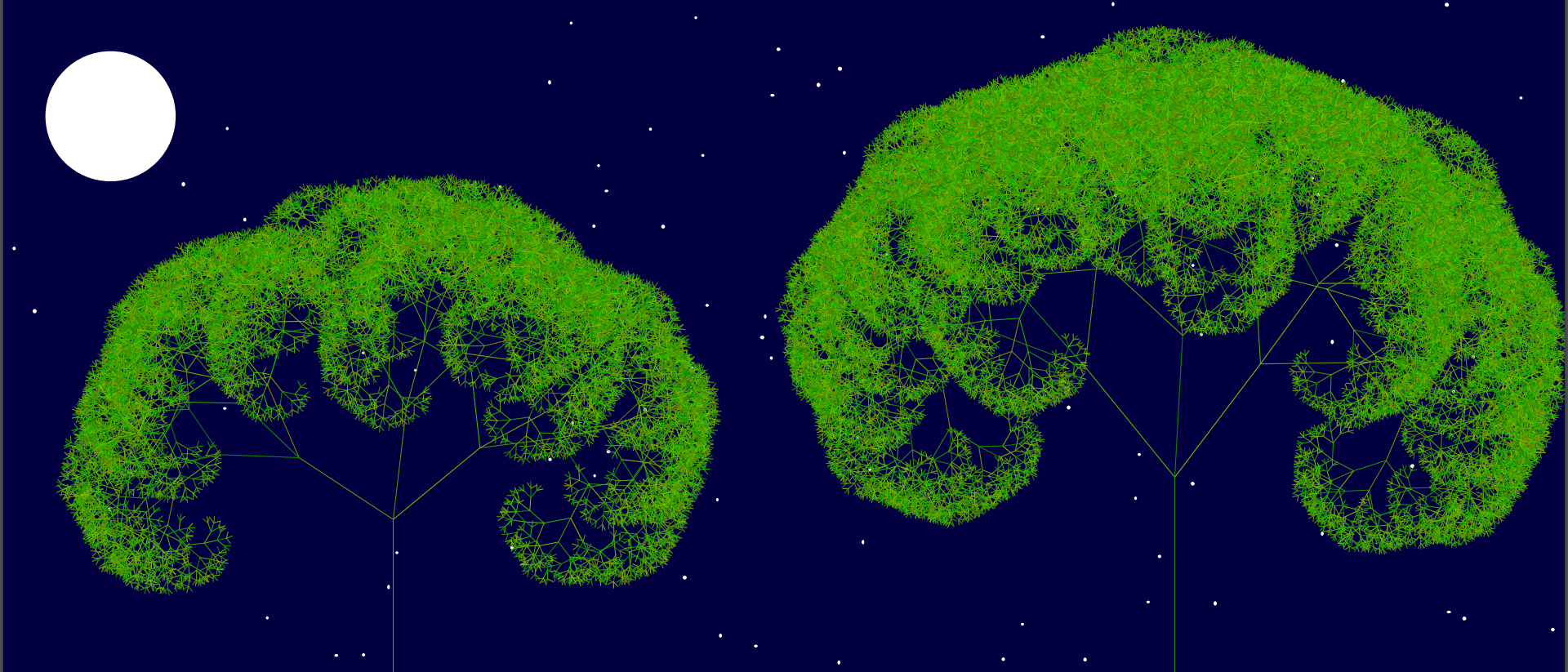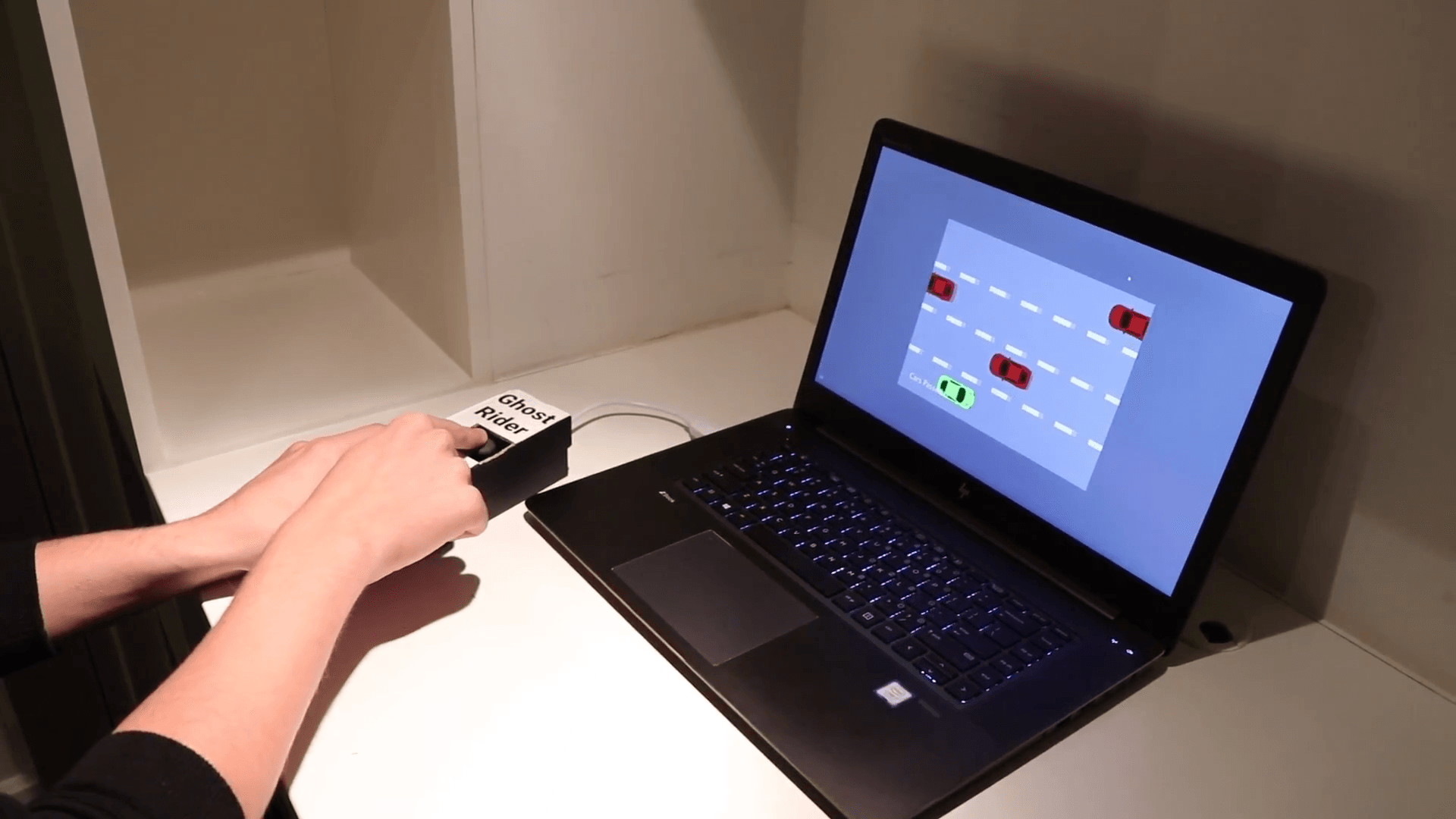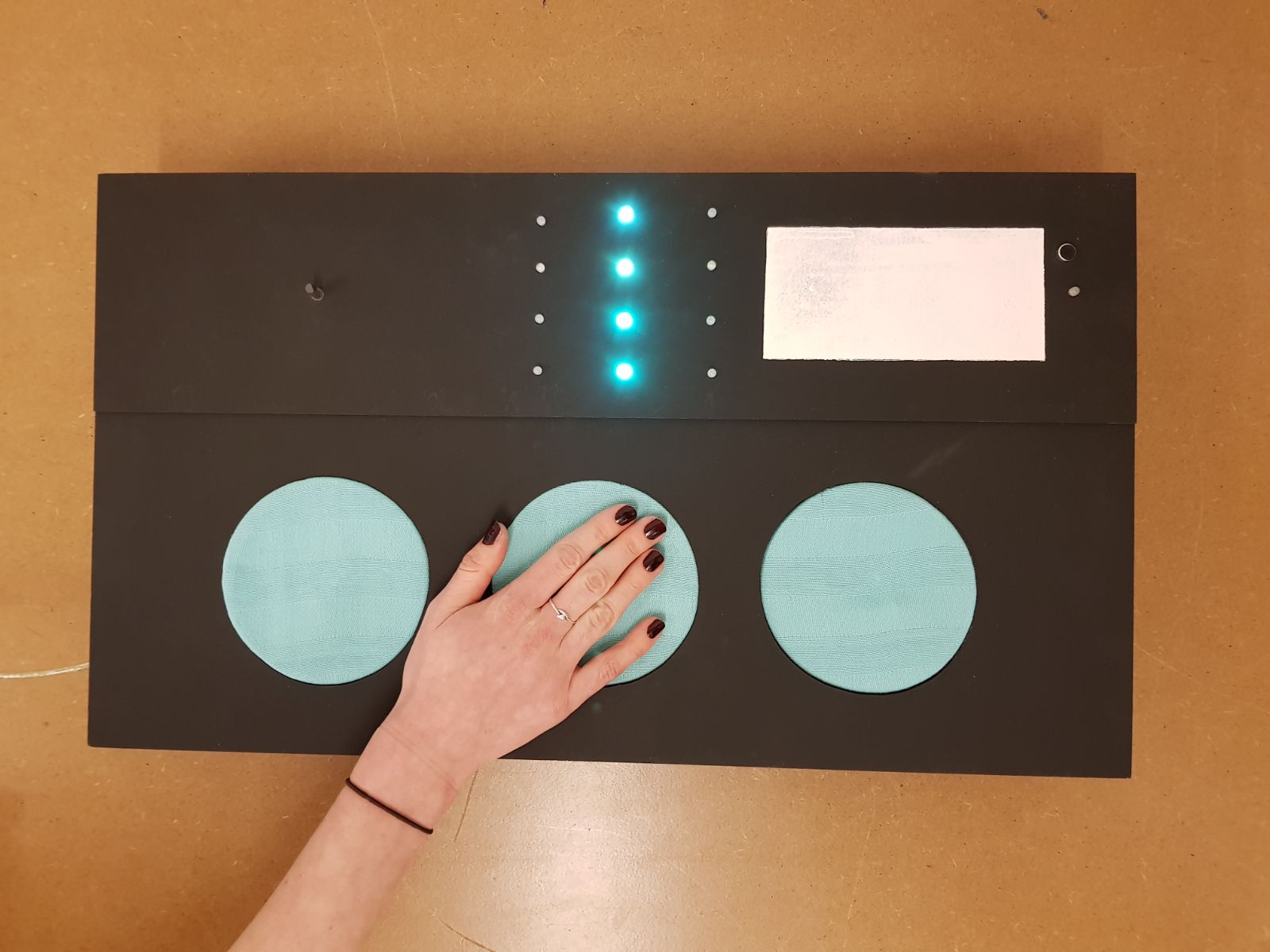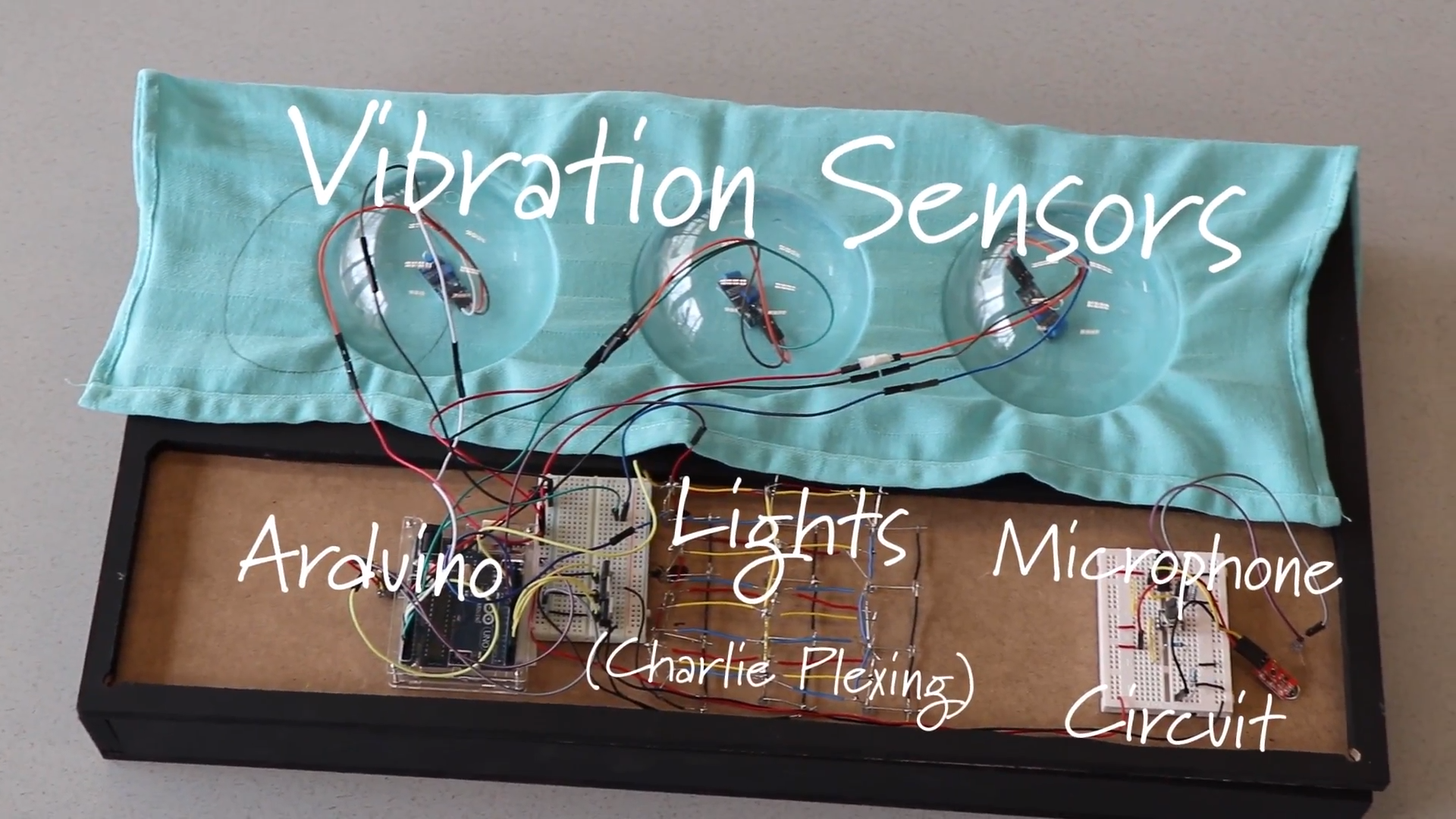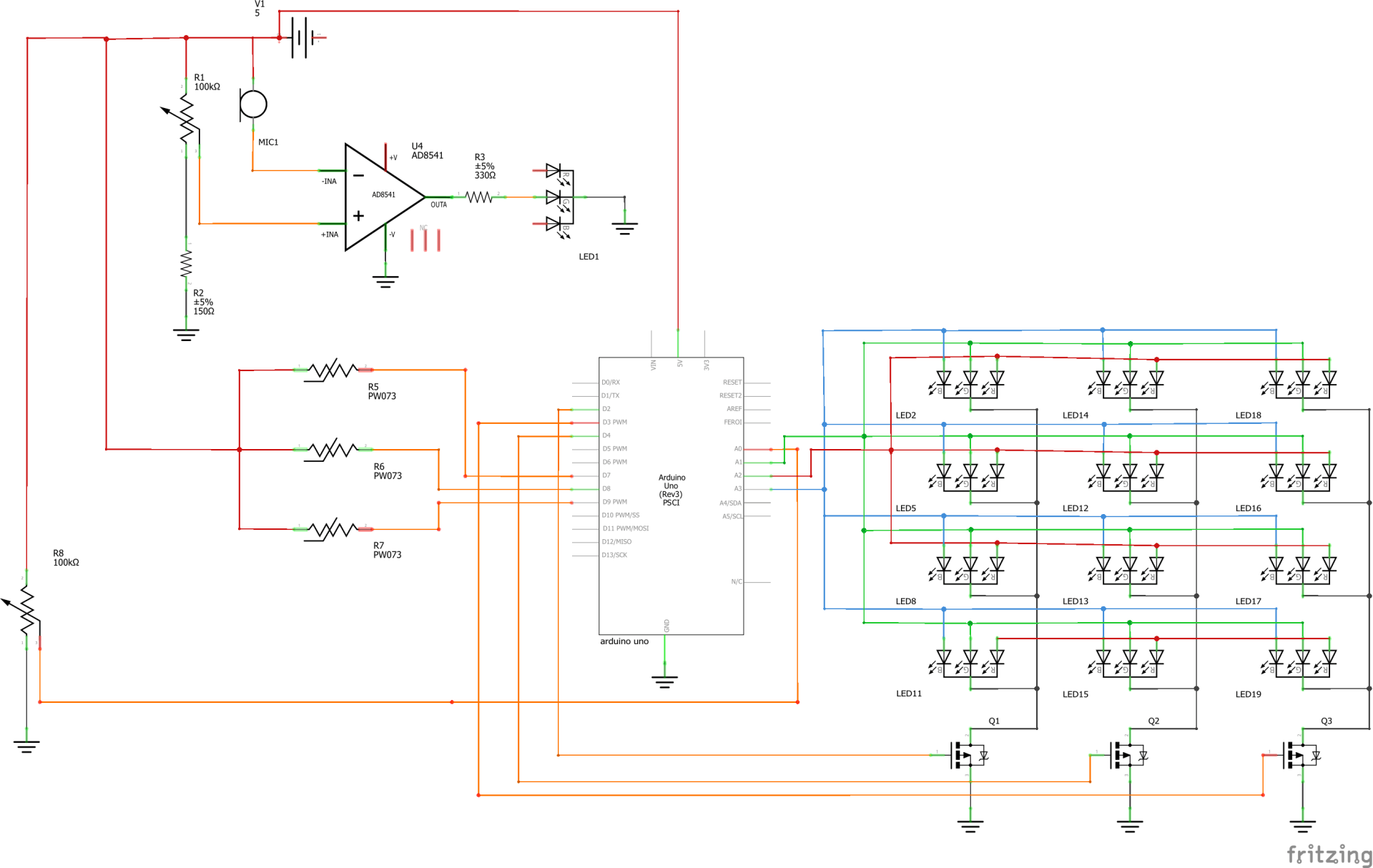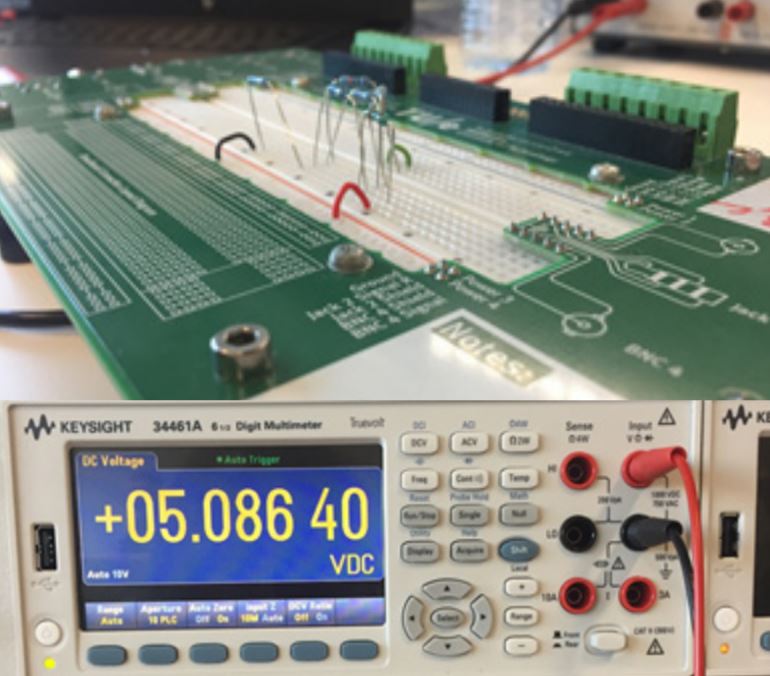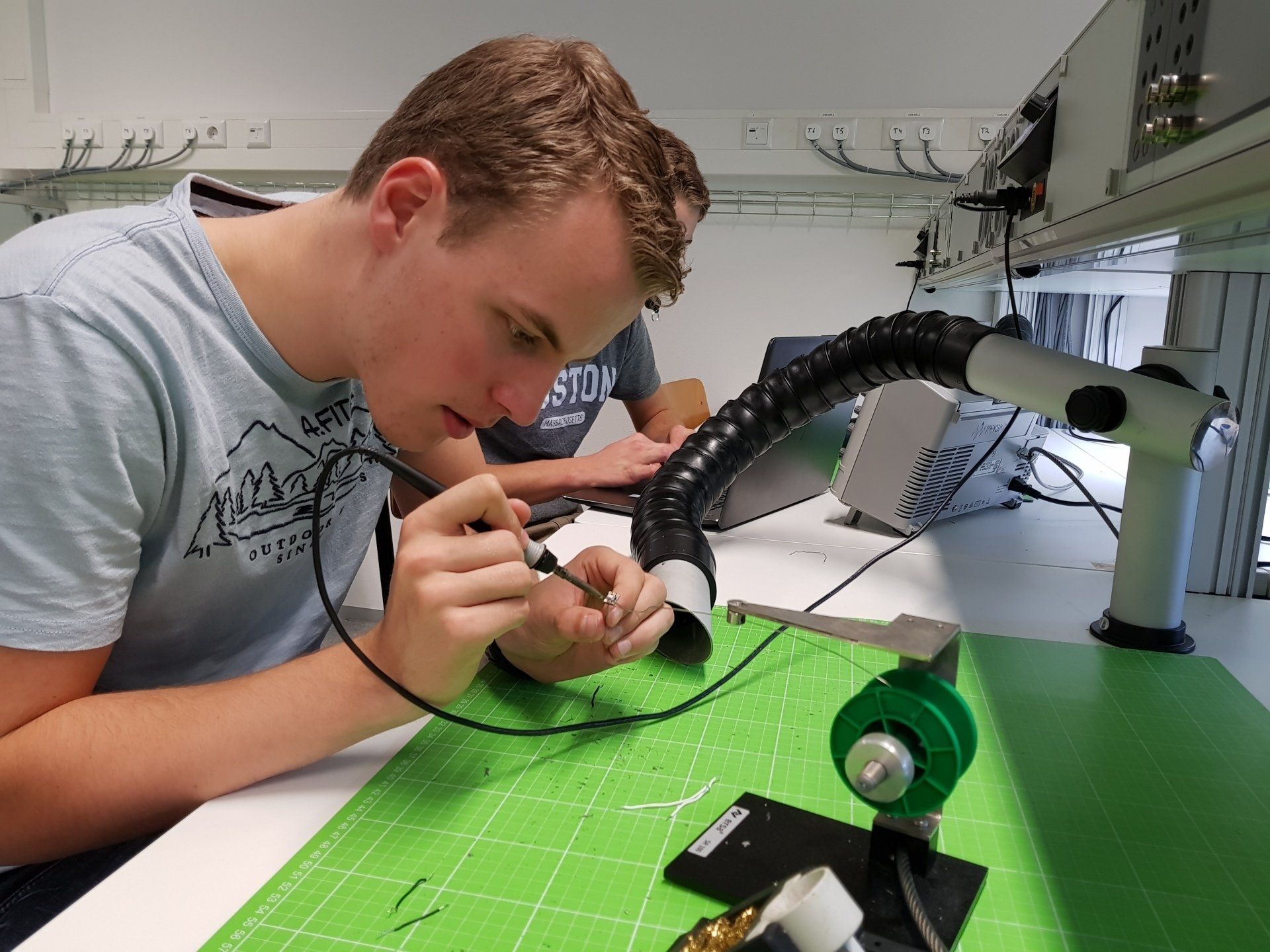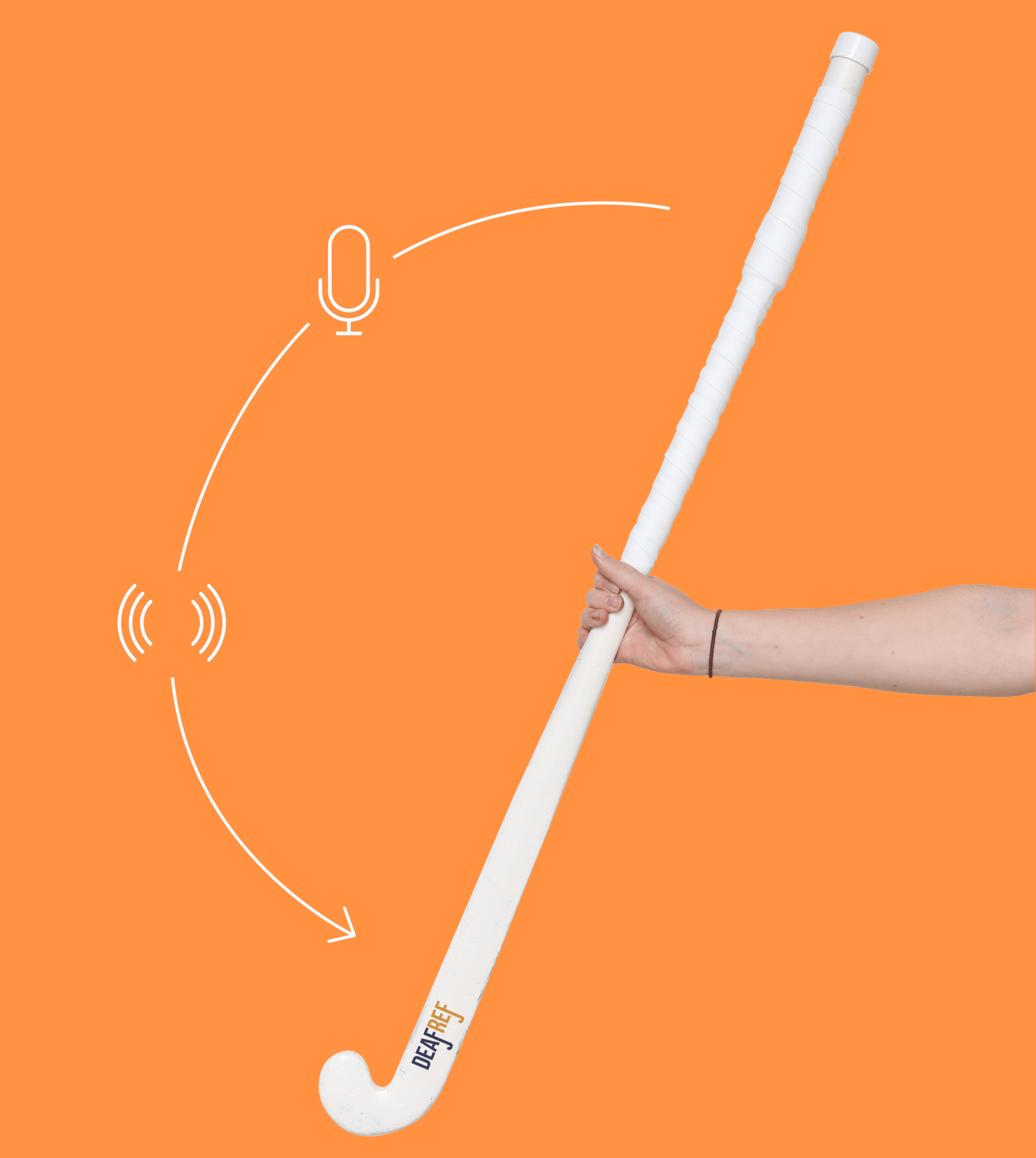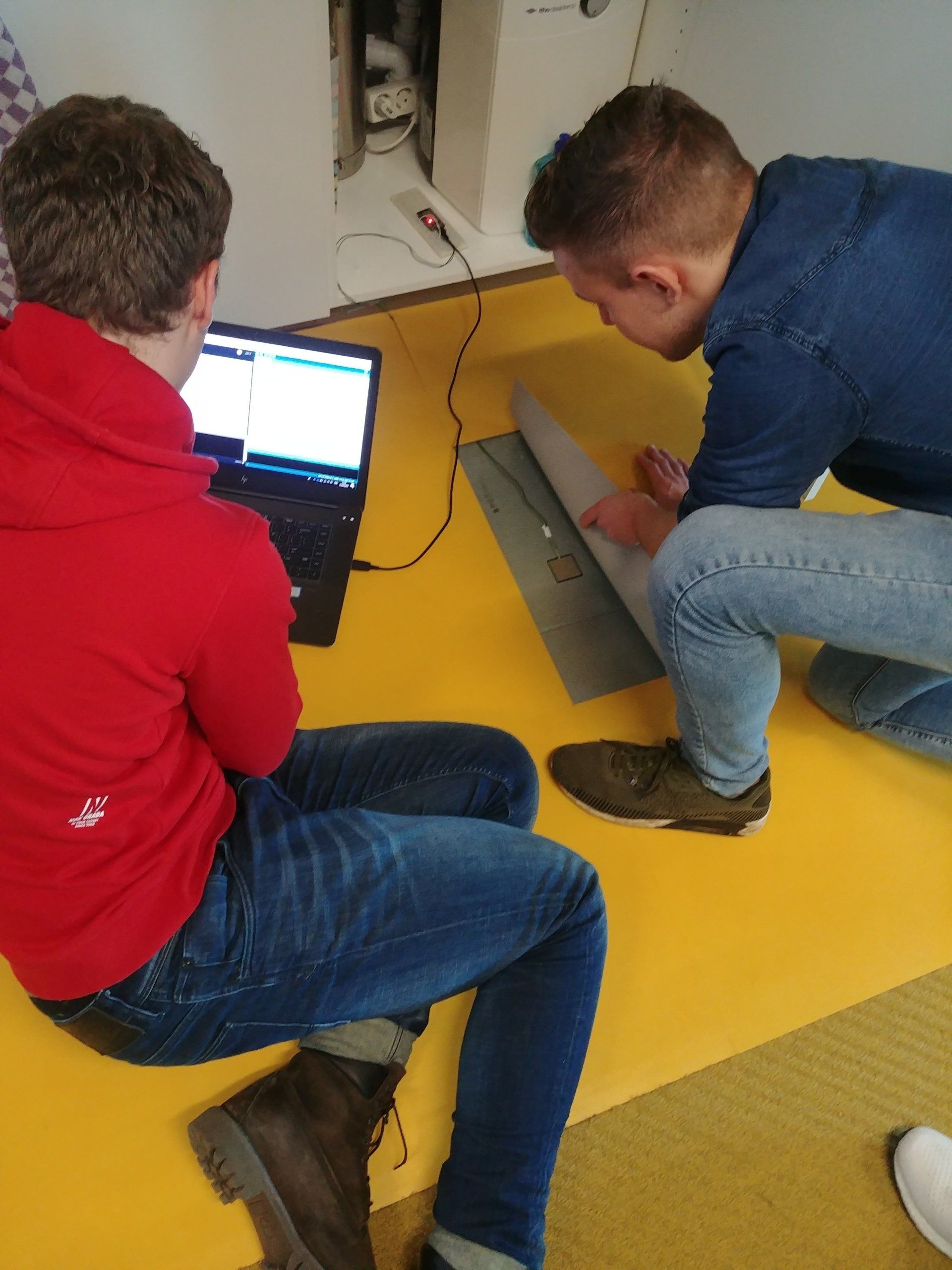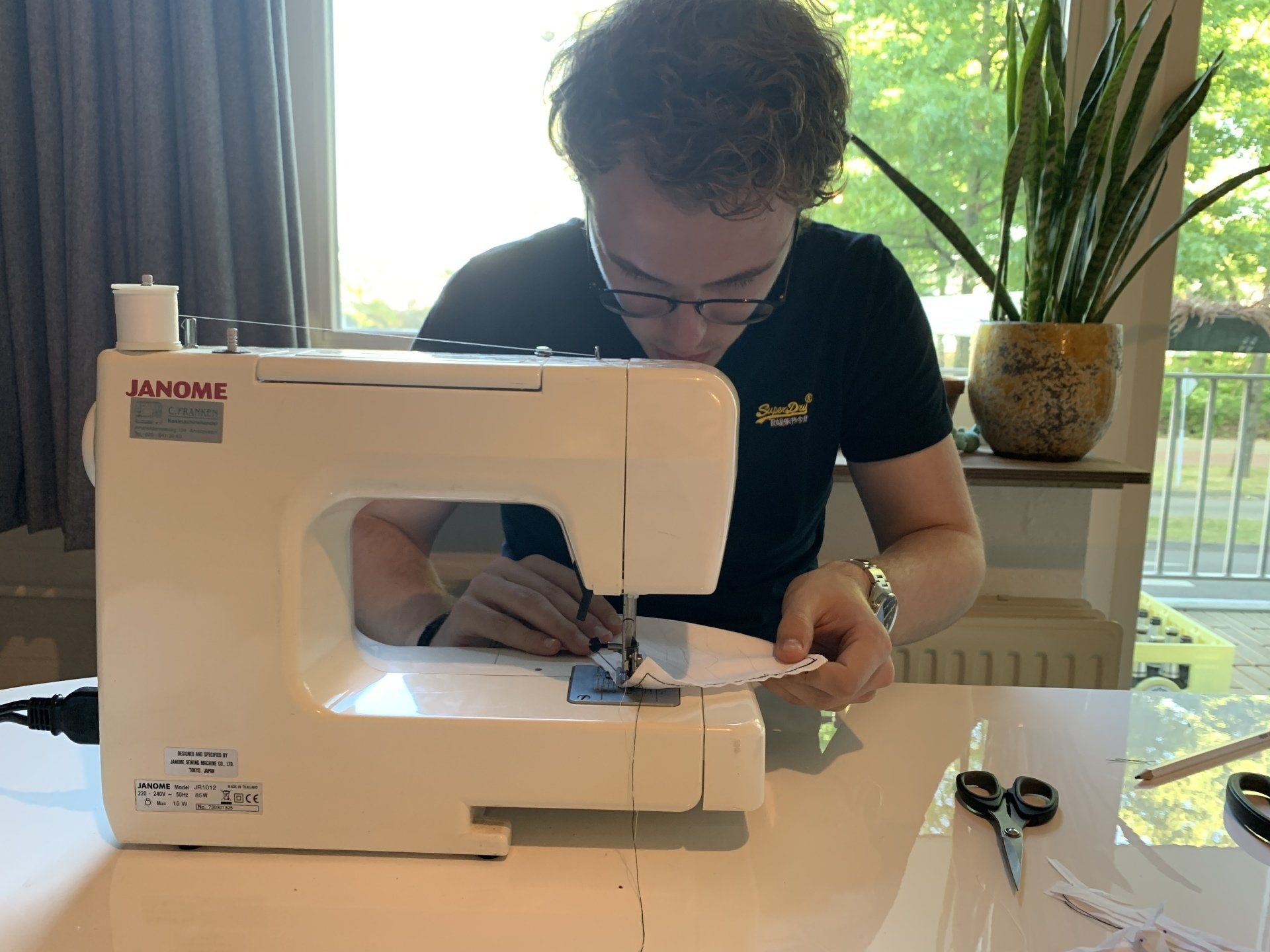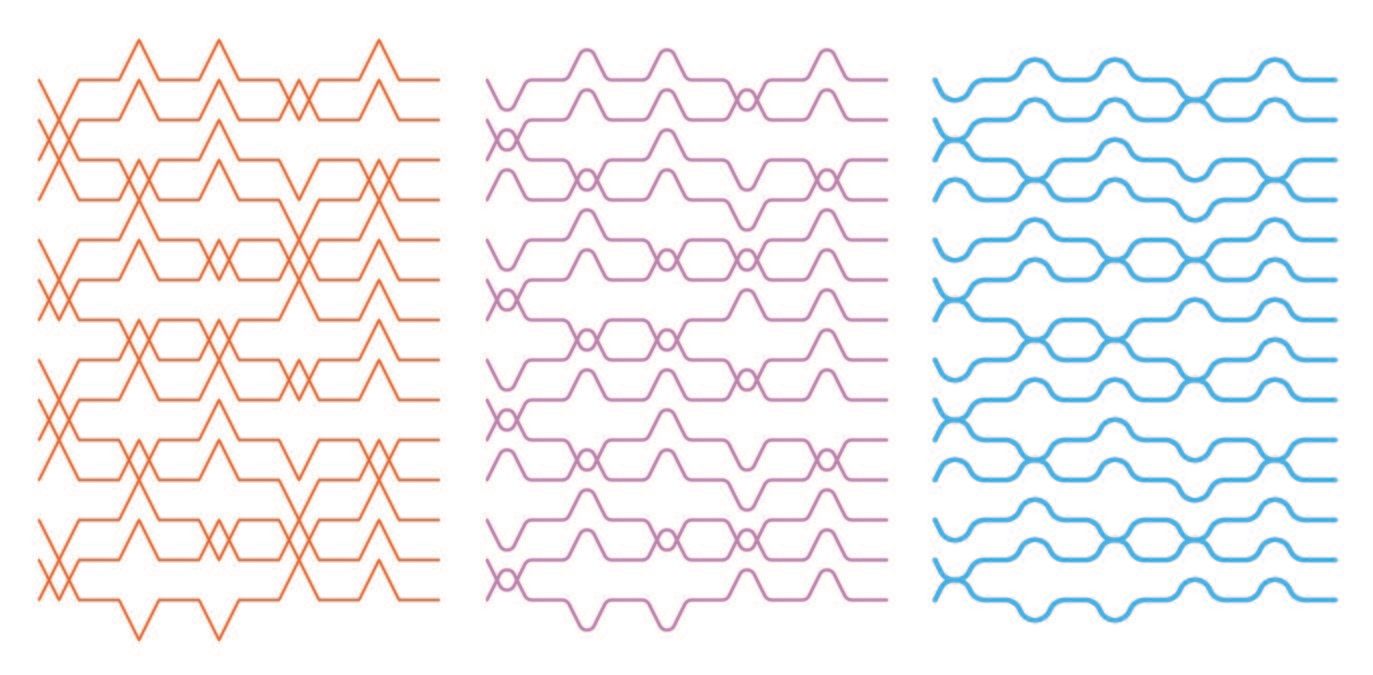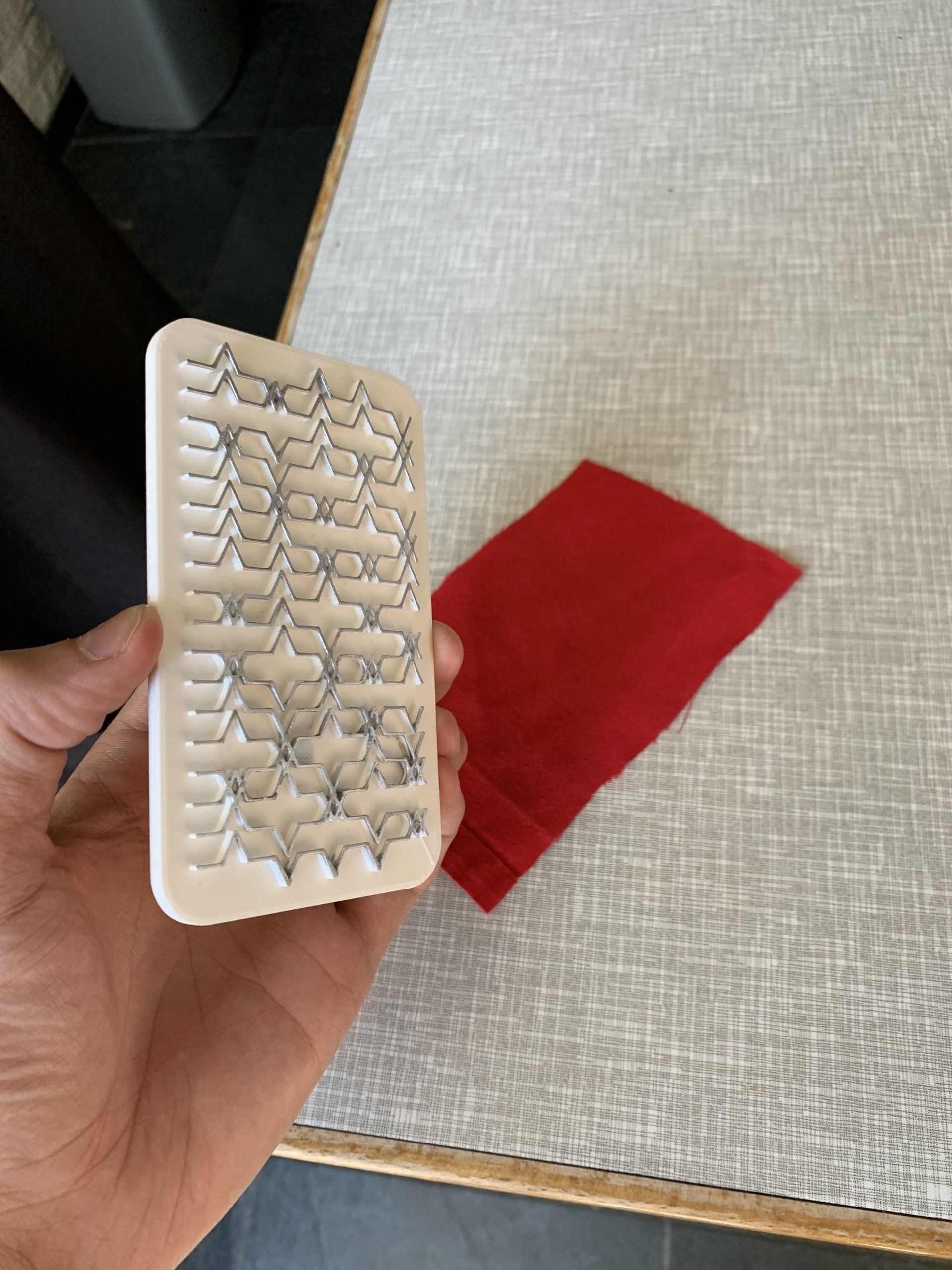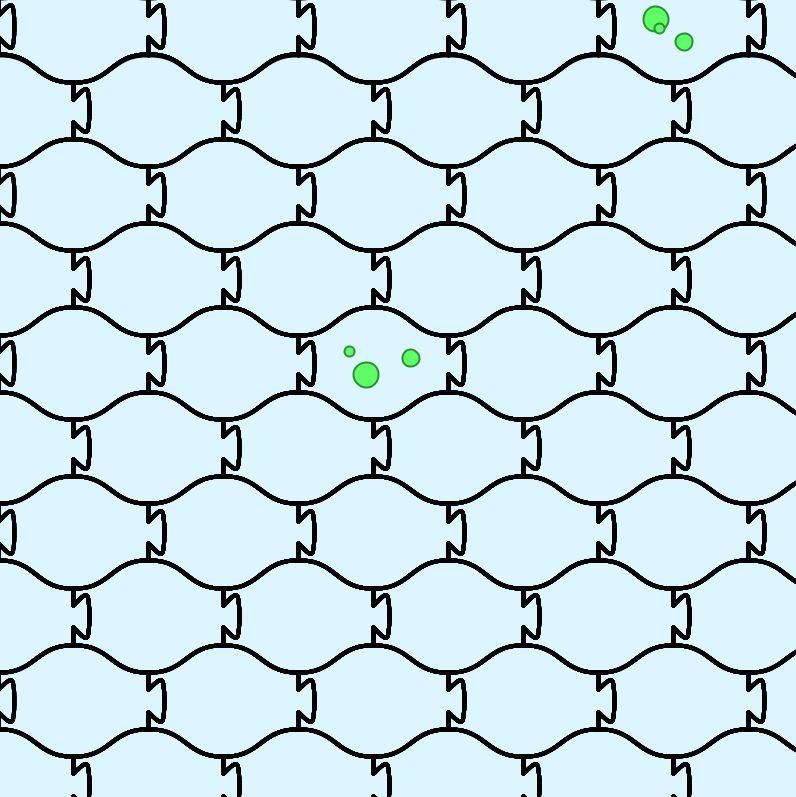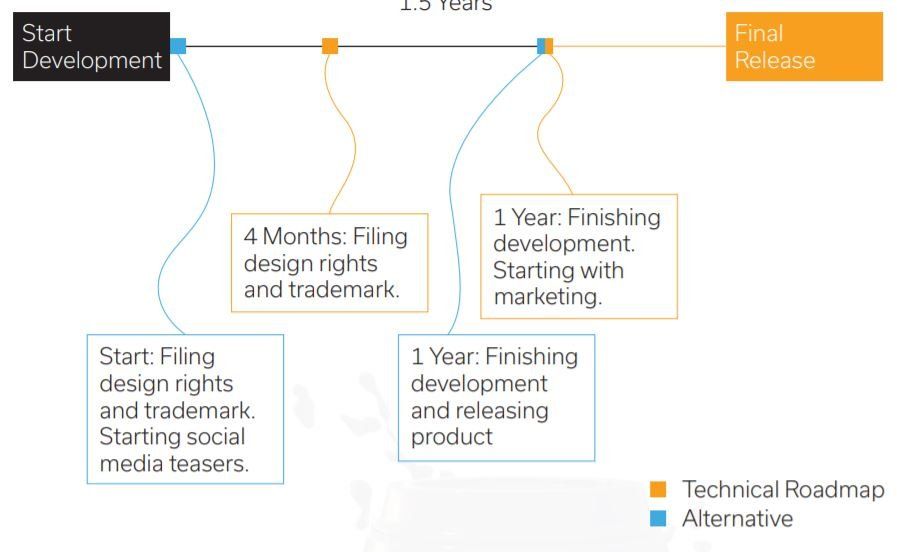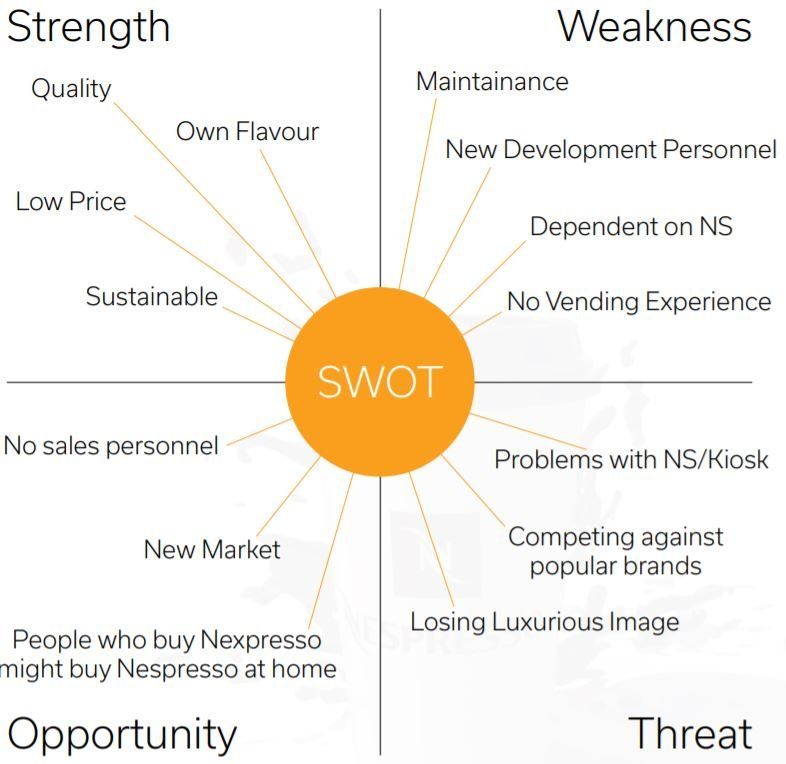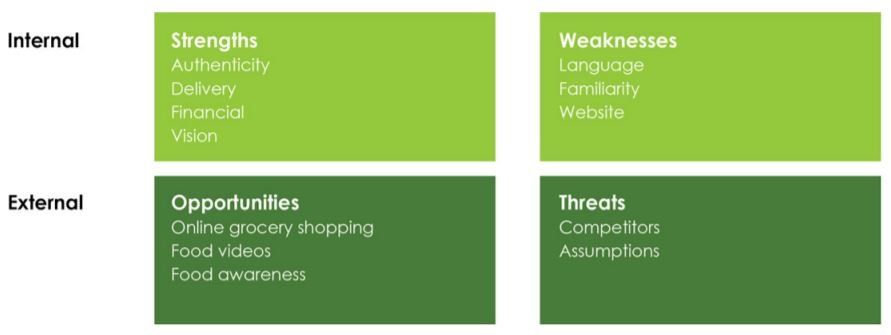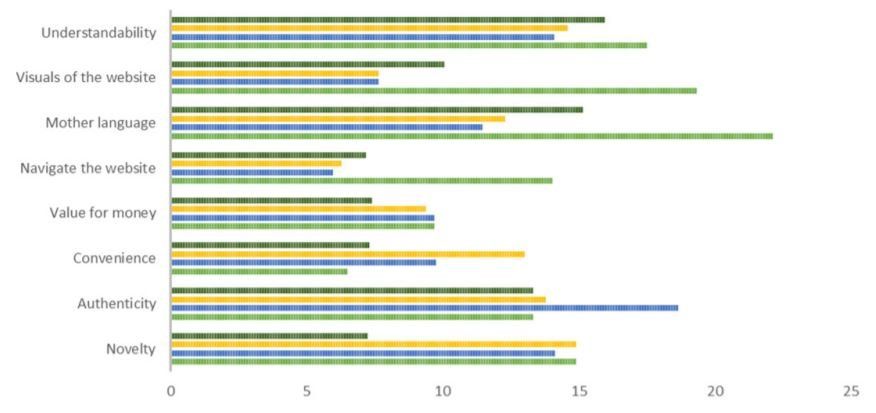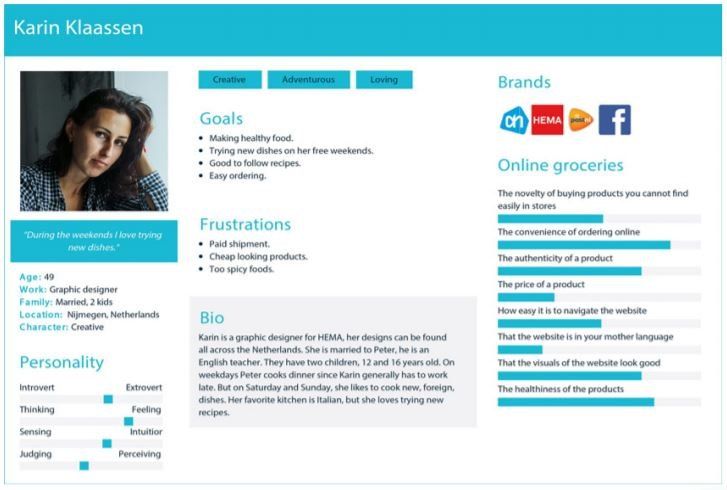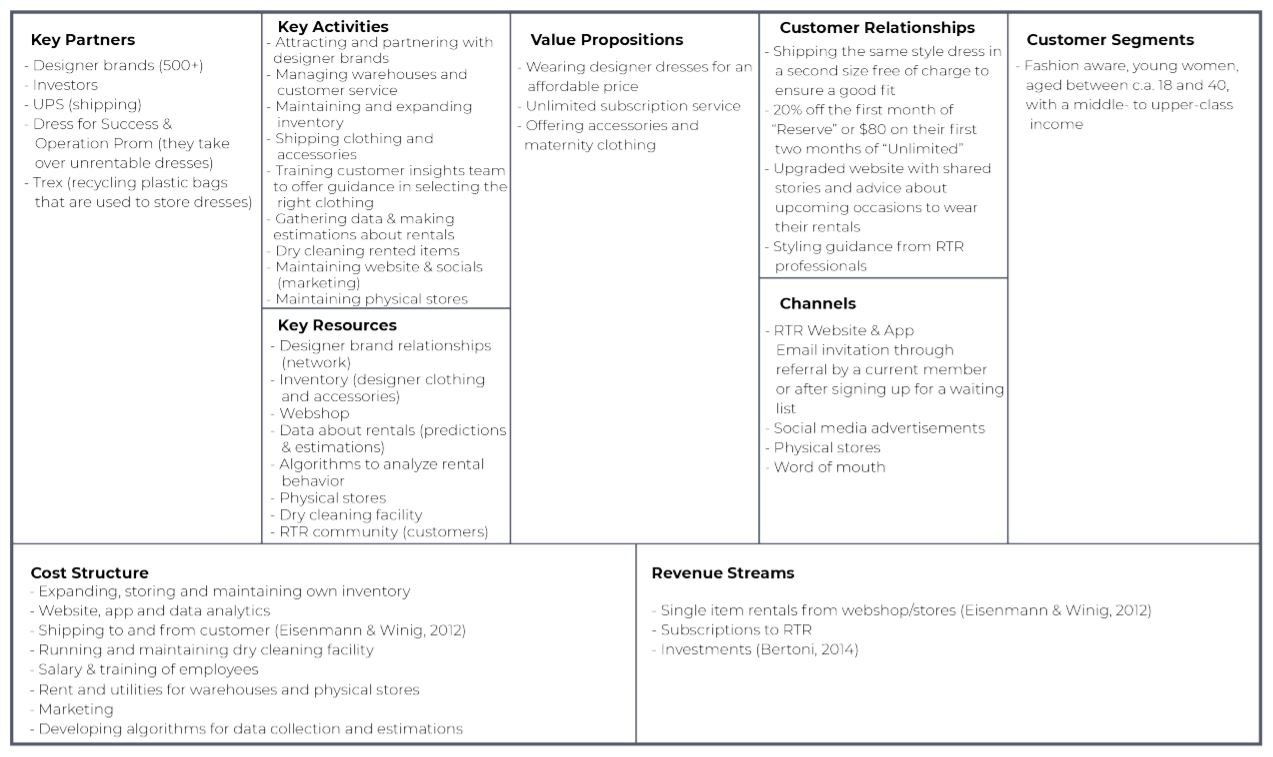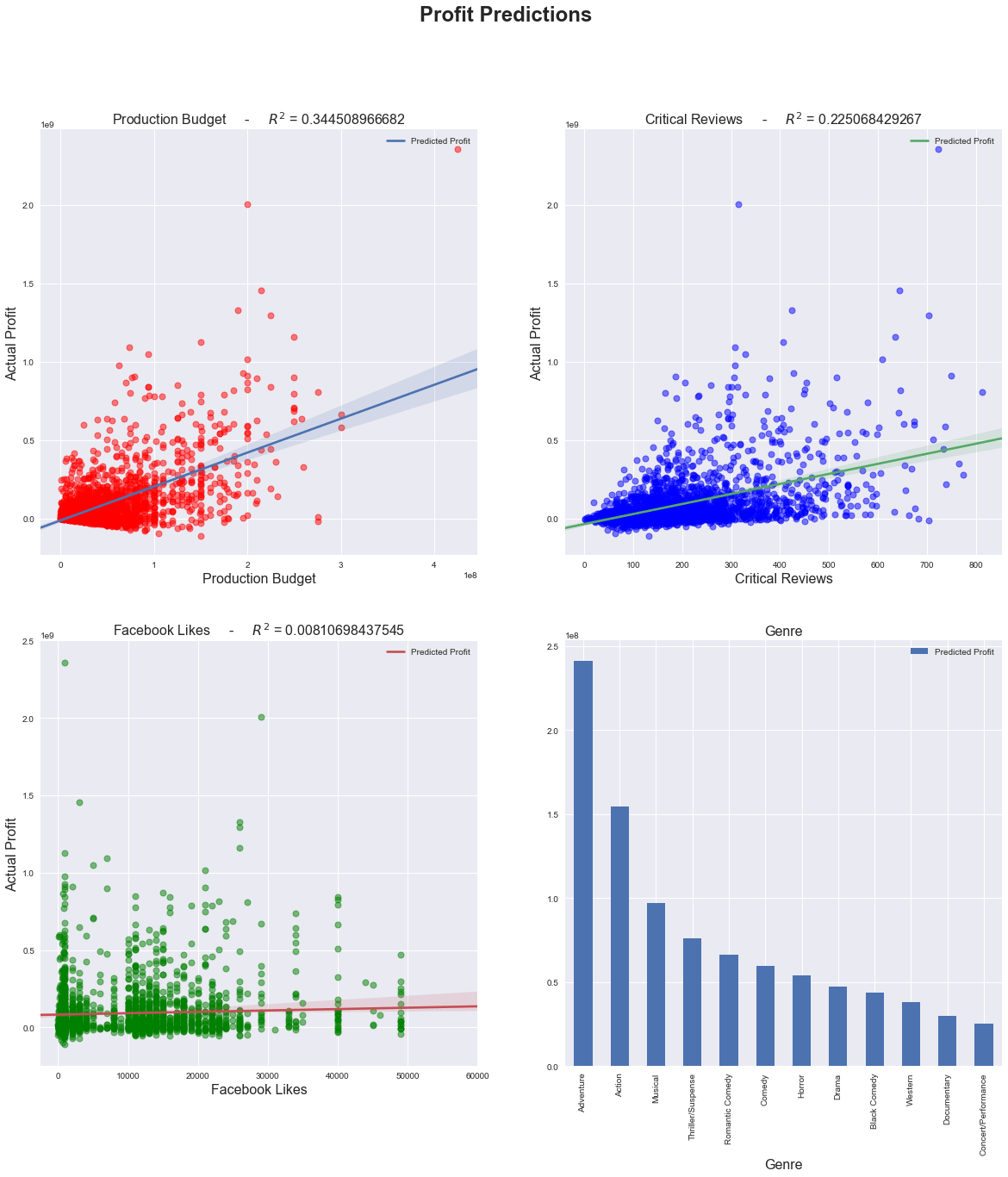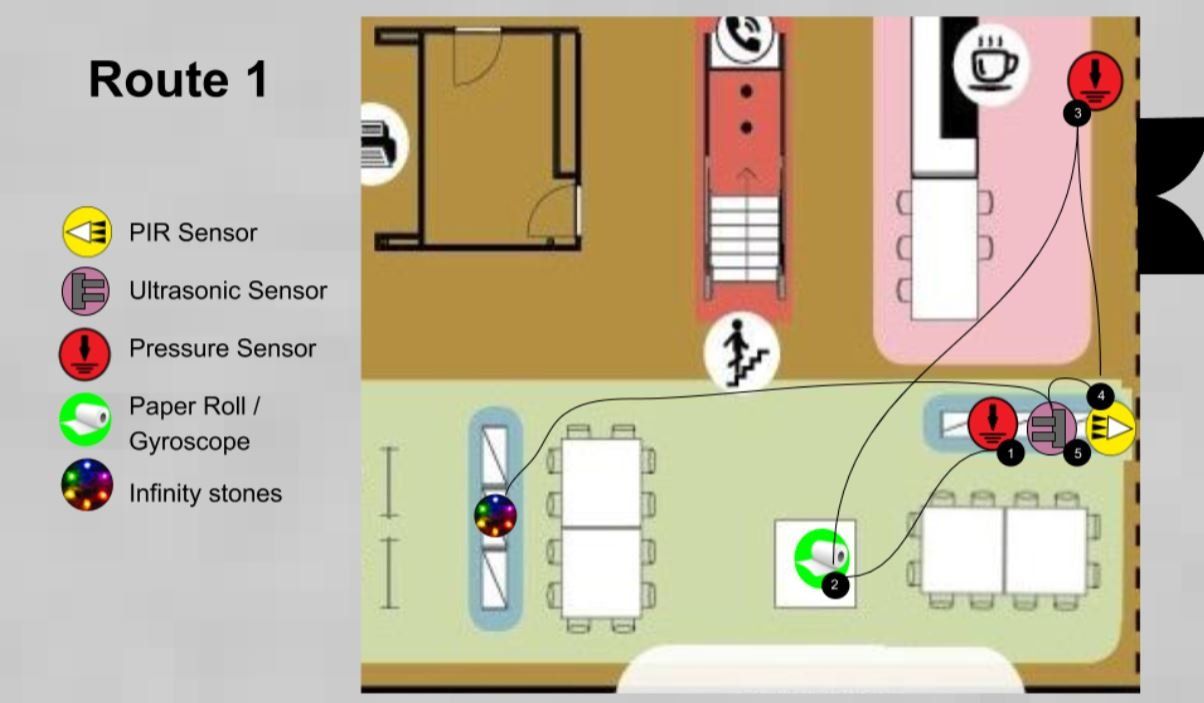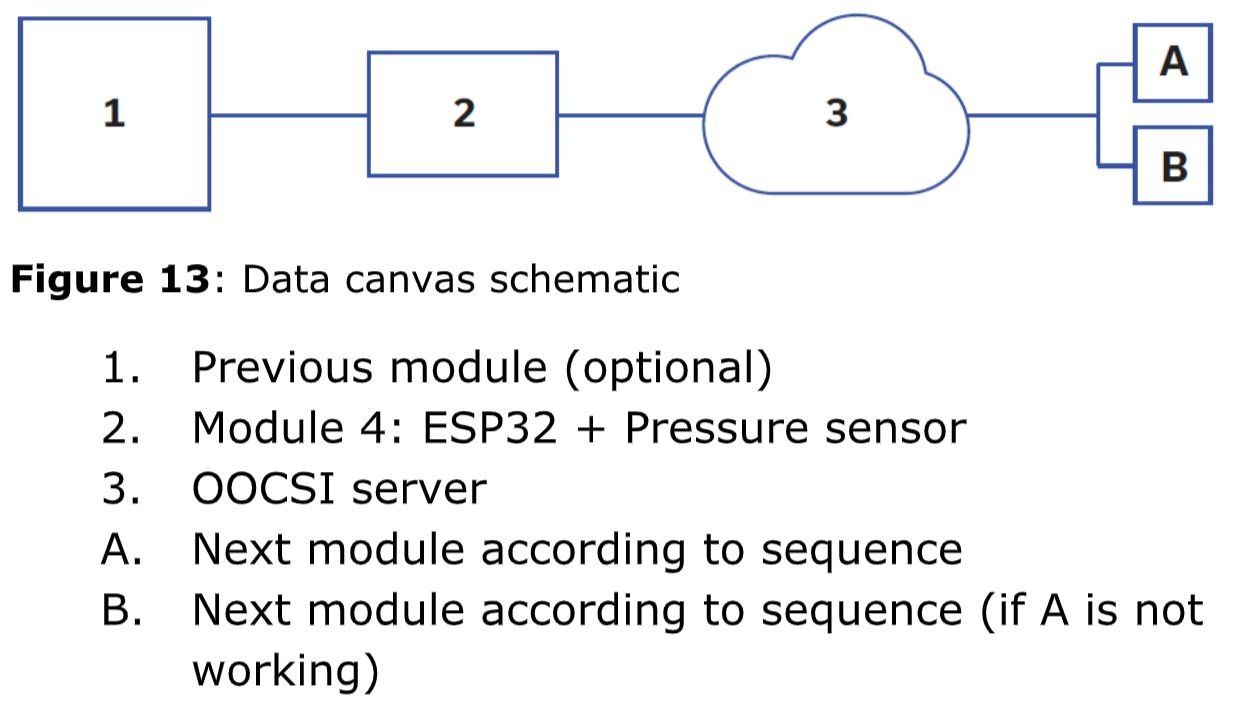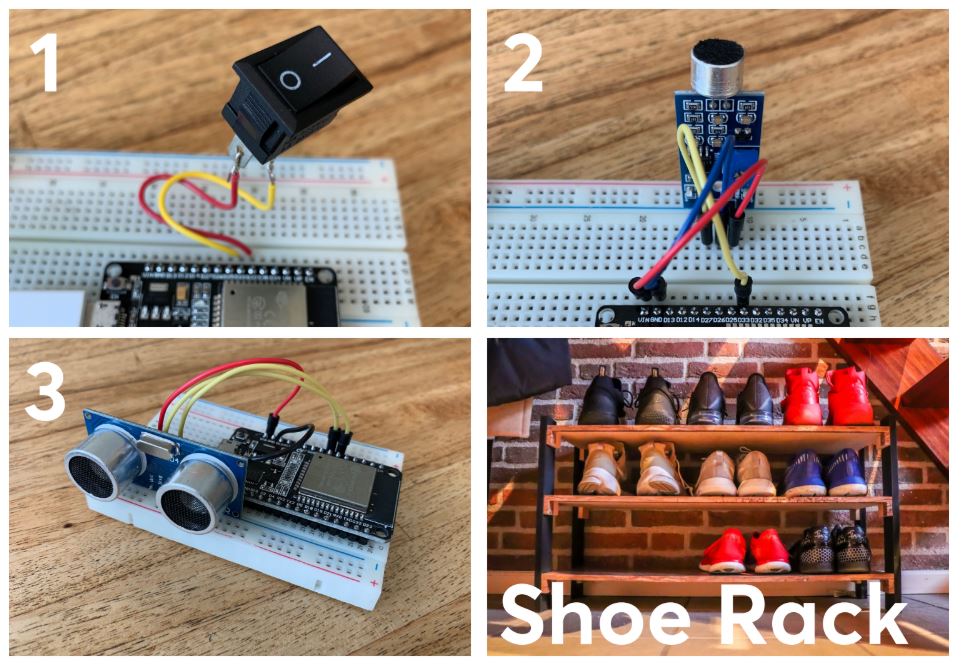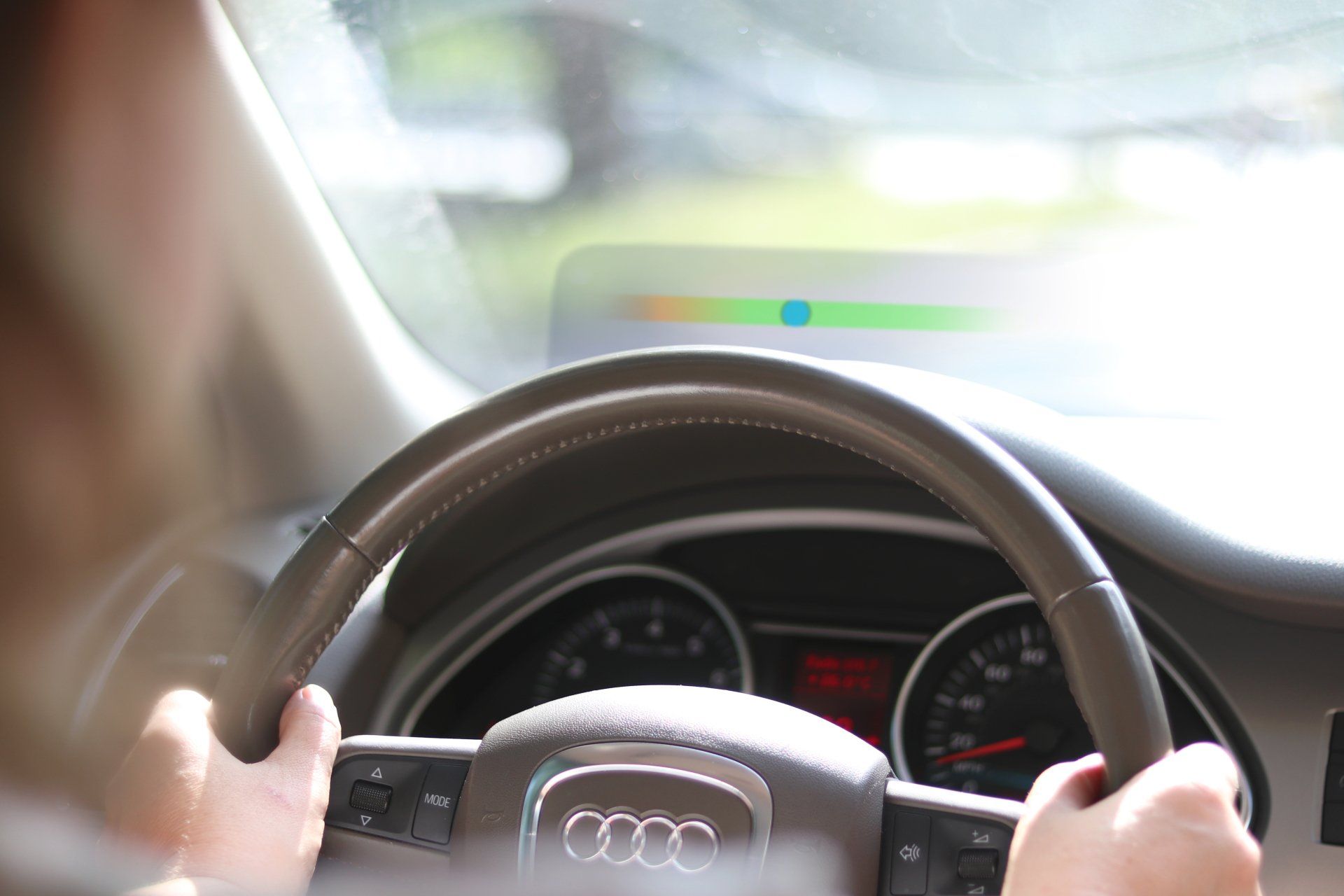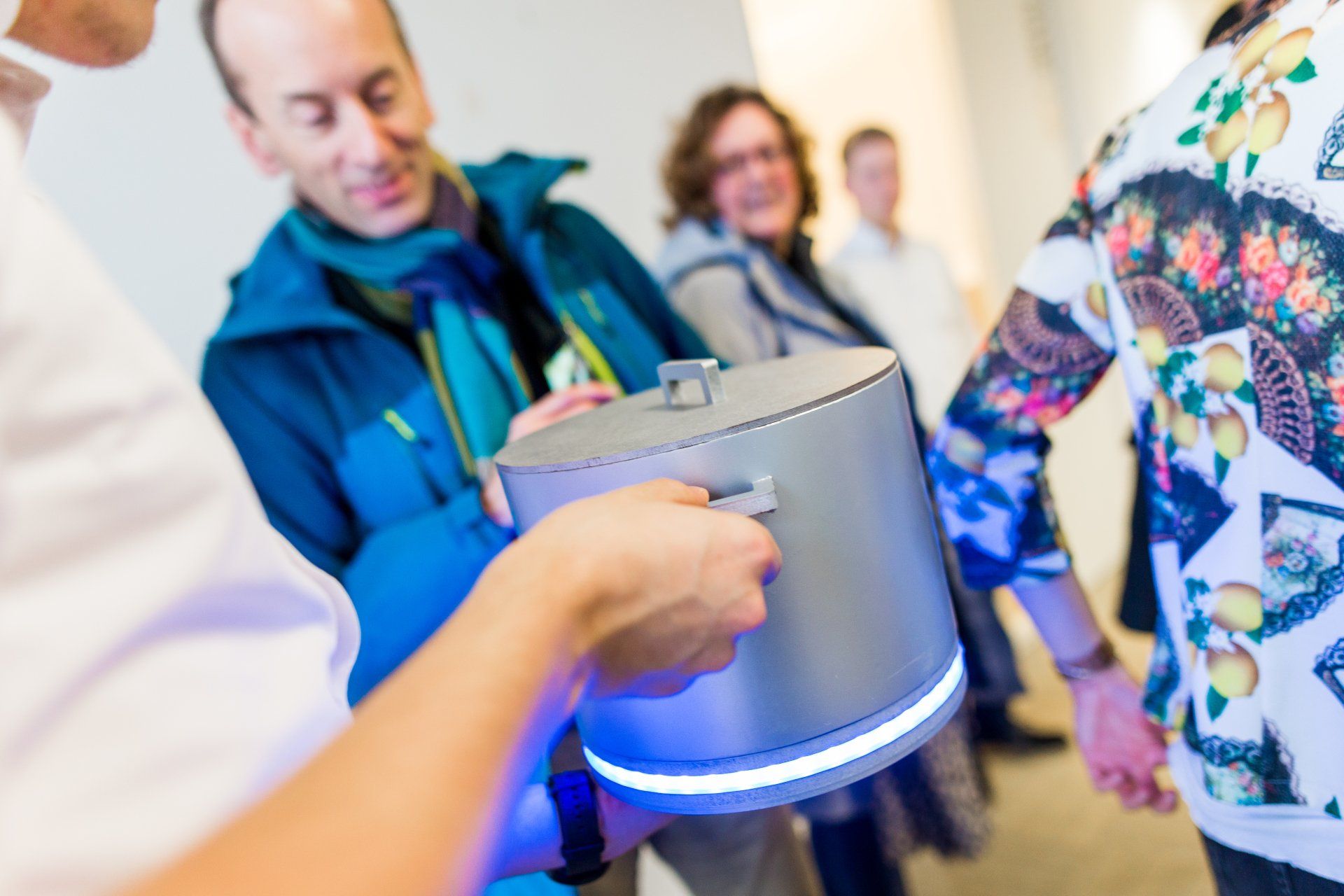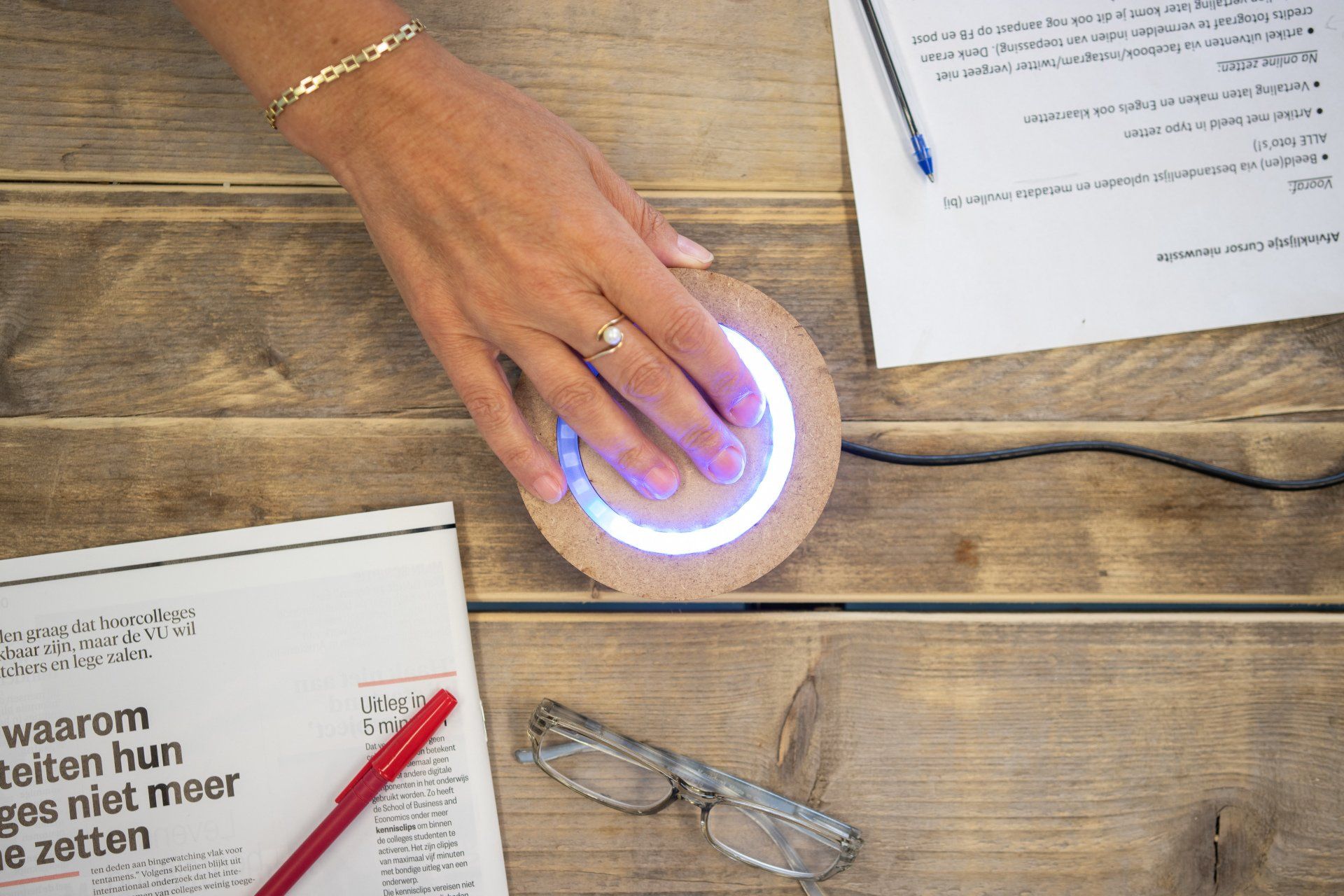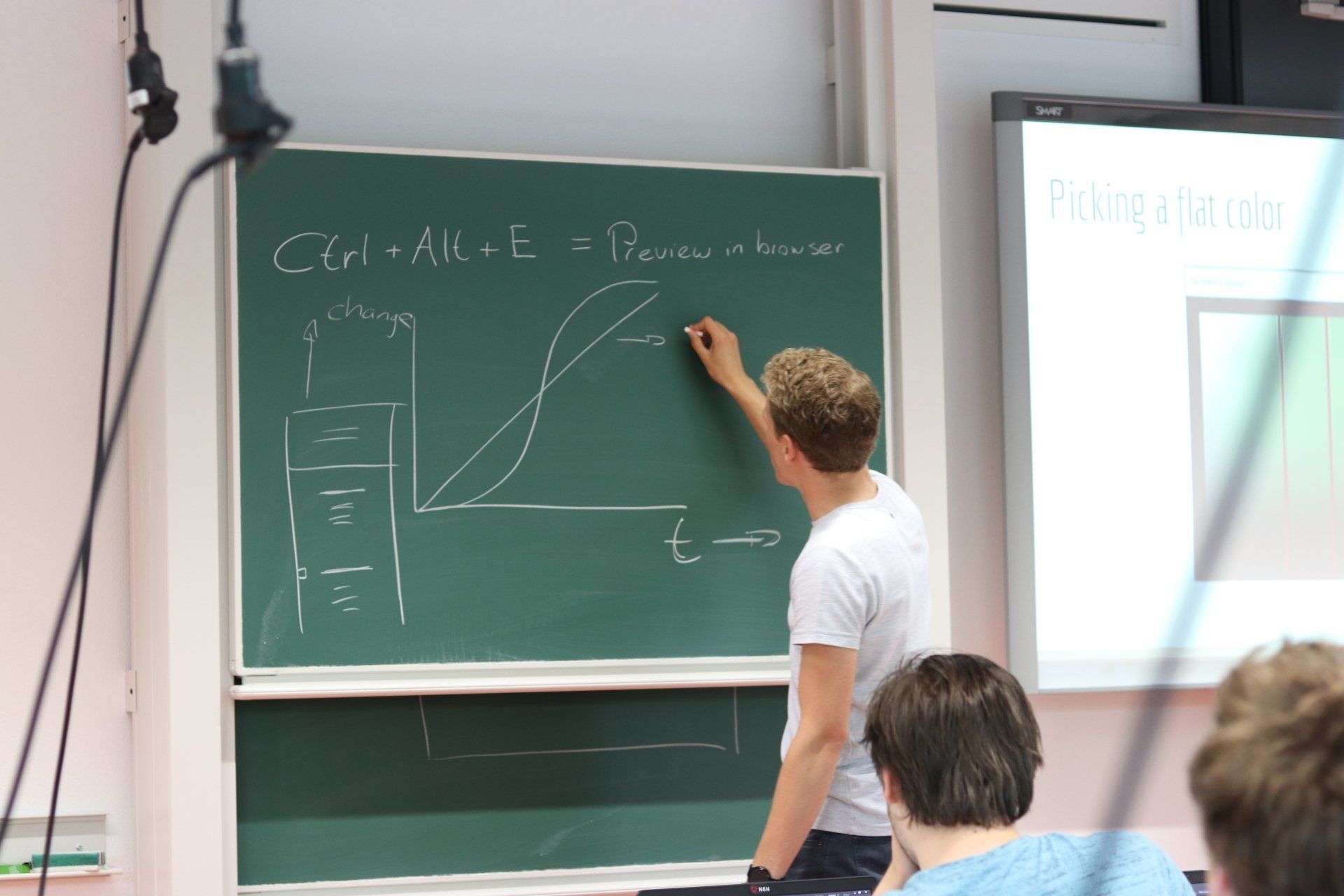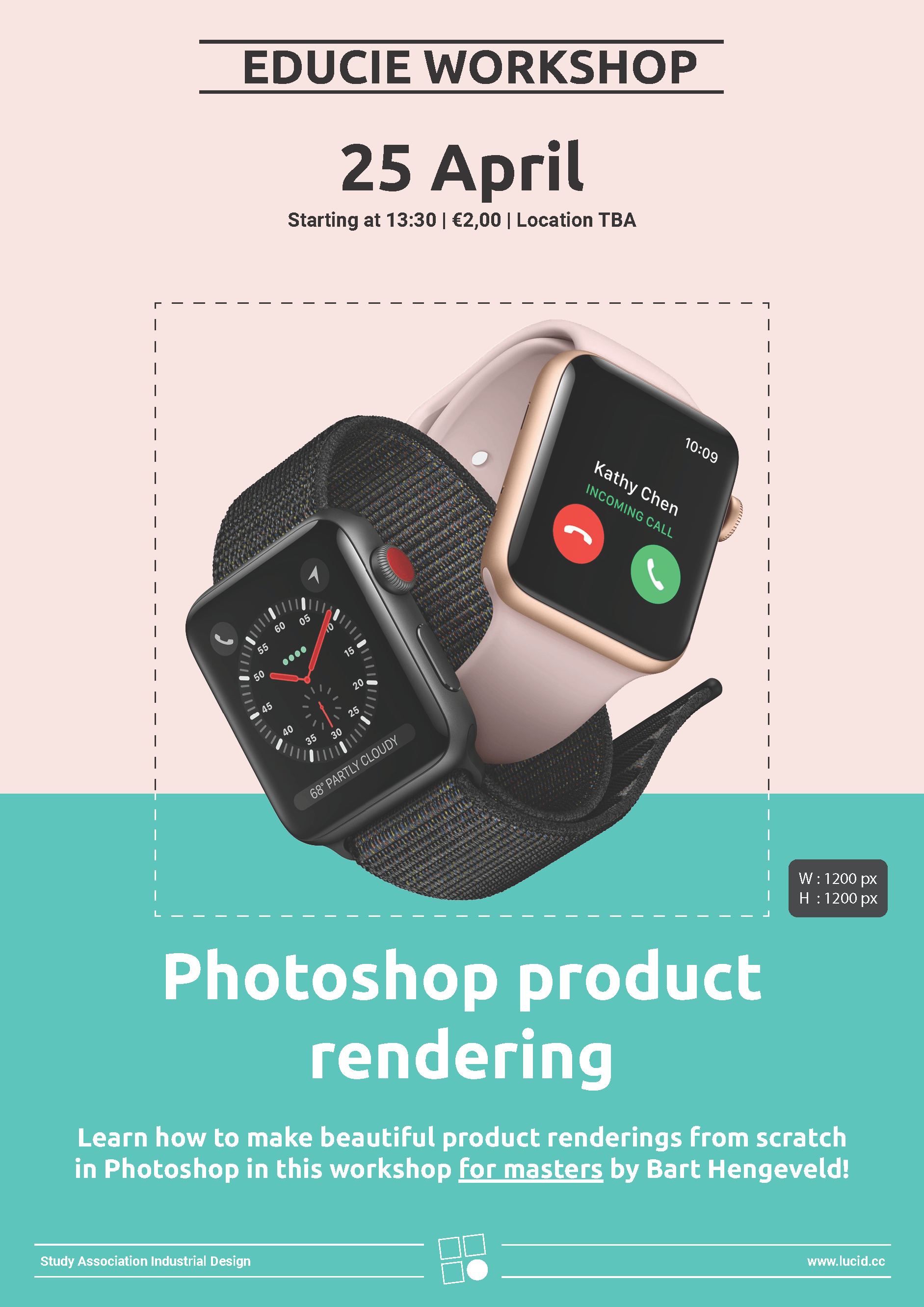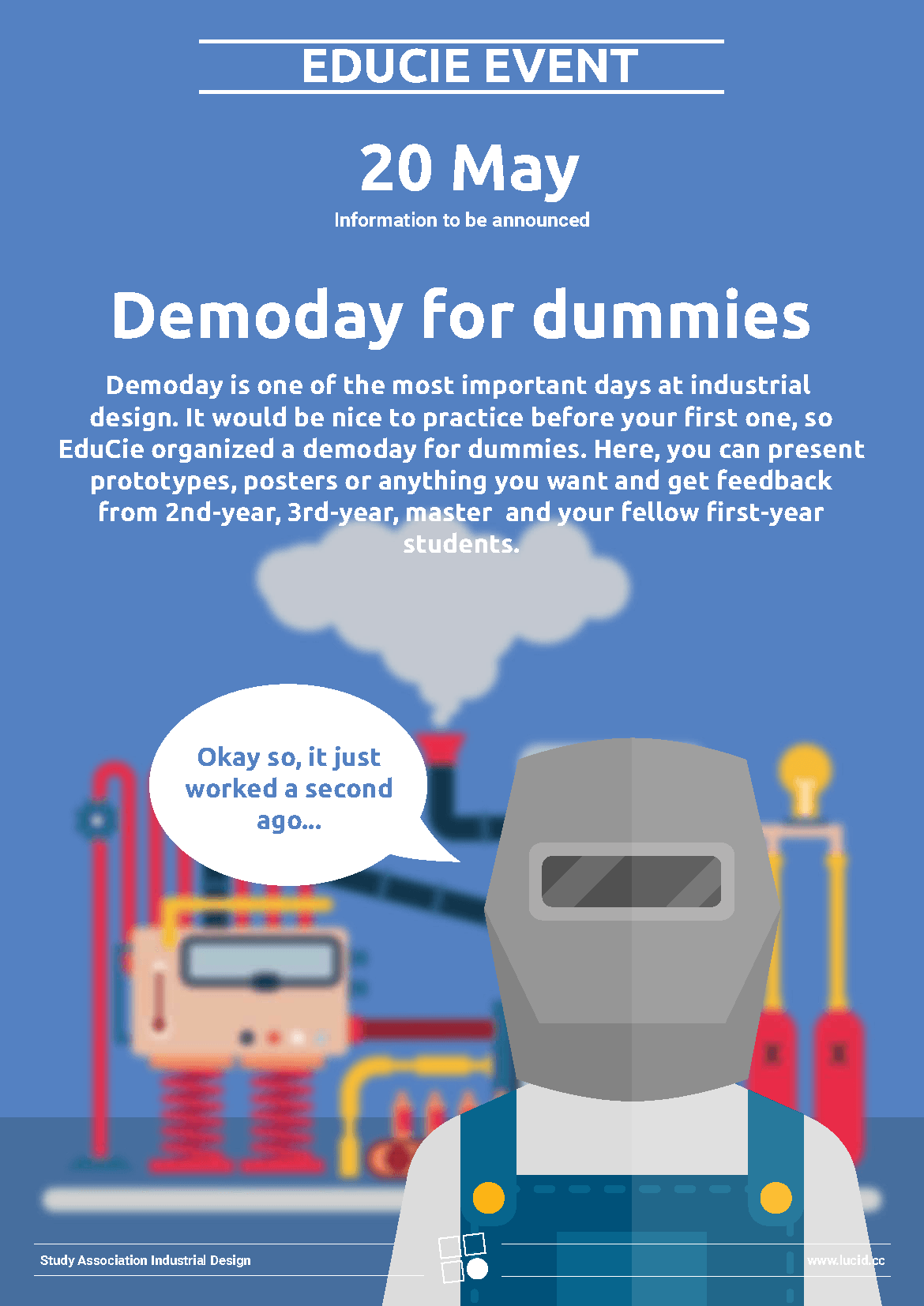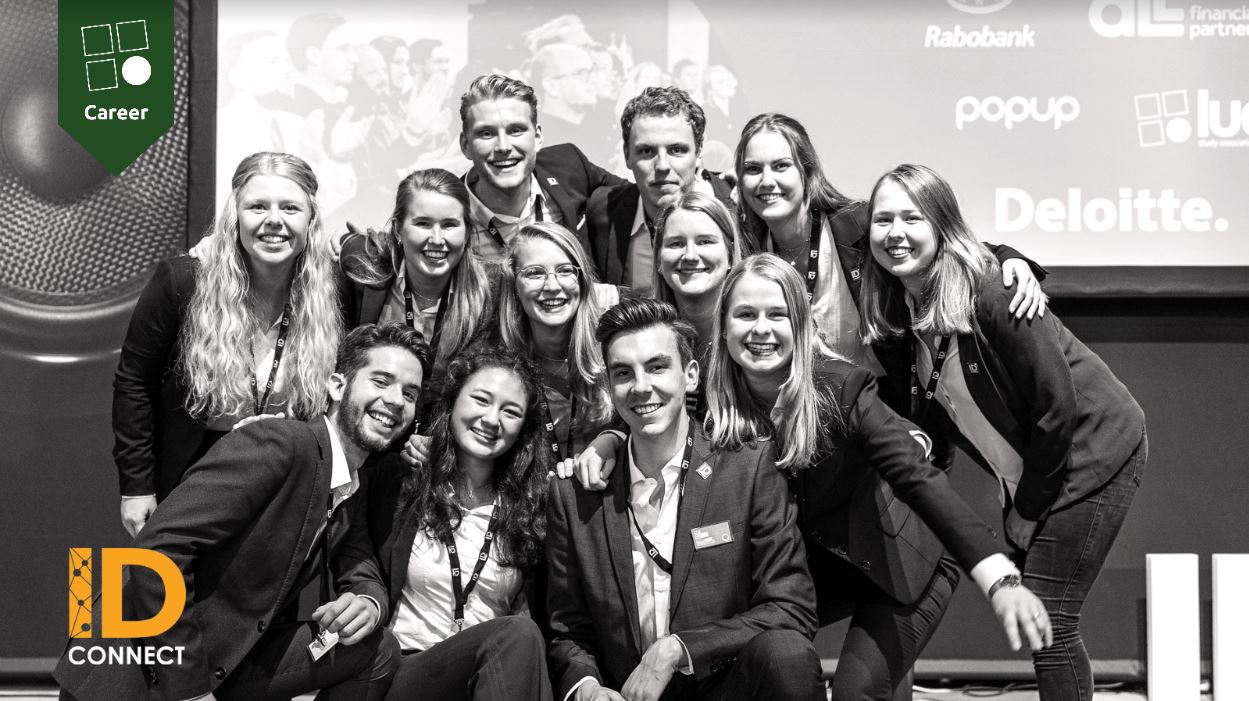Creativity and Aesthetics.
My first experience in this area came from the From Idea to Design
course. Going through my first (mini) design project, I was introduced to working in an iterative, reflective process in which I learnt to apply different ideation techniques. By using this ‘designerly approach’ throughout my study, I was able to improve and expand my skillset, learning to intuitively use the appropriate methods where necessary.
Throughout the courses and projects of my Bachelor, I have developed a quite minimalistic design style where I aim for ‘clean’ looking aesthetics without too much distractions. This is not only visible in my physical designs, but also in my graphical and illustration work, which I often use to communicate my ideas and concepts.
Whereas I mostly developed my visual aesthetical skills through learning by doing, I was introduced to the Aesthetics of Interaction
in the identically named course, which taught me how to design meaningful and expressive interactions. By using concepts like experience prototyping [1], interaction relabeling [2], and the frogger framework [3] while going though a mini design project, I gained the theoretical and basic practical knowledge to create expressive designs using bodily skills.
During my Internship, I focused on digital UI/UX design. By learning about concepts like information architecture, continuity, or 8pt grid, I was able to improve the aesthetic quality of my graphical designs. My internship also taught me some new ideation techniques like sprint mapping or storyboarding.
To learn more about materiality, I chose to follow the Digital Craftsmanship
course in my third year. This course introduced me to working with fabrics, and taught me how the material qualities of these fabrics can be used or changed to express different looks or styles in my designs.
User and Society.
In the course User-centered Design, I first learned about the importance of including users and their values in the design process. I learned that a design- or engineer-centered mindset could lead to complicated designs with unnecessary features that do not match the user’s needs. This course therefore learned me the techniques and importance of capturing the users capabilities, limitations, environments, and goals.
Broadening the skillset from User-Centered design, the USE course Empathy with the User
introduced me to the value sensitive design approach. Within this approach, I learned that a truly user-centered design project should include all direct and indirect stakeholders and their values. I now understand that by doing this, we can identify conflicts and opportunities between values, which allows us to better emphasize with the user and his context. To realize this, I learned how to apply and analyze user study methods like direct observation and diary studies. In the course Design <> Research, I learned how to choose the appropriate qualitative and quantitative methods for conducting research and analyzing results. By learning the strengths and weaknesses of each approach, I could make my studies more effective and of higher value.
During my Internship
at Less or More, a UX driven digital design company, I gained multiple valuable insights for working in a user-centered manner. By learning about the importance of alignment, the creation of value, and methods to combine the strengths of different user study techniques, I have grown in my ability to understand and communicate with users.
In the USE Basics
course, I learned about placing design in a societal context using both historical and ethical perspectives. This showed me that designers have the responsibility to consider and anticipate the societal and ethical impact of their work. This made me realize that these aspects are also drivers of design, as our design decisions can be influenced by societal and ethical needs or constraints.
I also learned that these ethical implications are not only related to the design itself, but also to studying users. Data Acquisition and Visualization through Embodied Sensors
taught me about using the FAIR principles to use existing user data in an ethical way. Making Sense of Sensors
elaborated on the FAIR principles and showed me how the value of privacy influenced and constrained the possibilities of studying users. I learned how to anticipate what ethical implications a user study can have for the participants. Interdisciplinary Innovation
also elaborated on ethics and privacy, but taught me that designers can use creative ways to (partially) work around those constraints by being transparent about how and when data is collected.
User-centered Design
Report on request
Empathy with the User
Report on request
Design <> Research
Report on request
Data Acquisition and Visualization through Embodied Sensors
Report on request
Making Sense of Sensors
Report on request
Technology and Realization.
My first experience in this area was the Creative Programming
course, where I learned the basic structure and approach for working with code. By learning the basics of Processing and Arduino, this course enabled me to create basic and simple interactive prototypes.
In the Creative Electronics
course, I learned about the basics of building electrical circuits, doing diagnostic measurements, and combining these with sensors, actuators, and microcontrollers to create interactive prototypes. This course also helped me to look differently at complex problems. I learned that solving complex problems can best be done on a low level, focusing on individual problems. This is a way of thinking I still use to date.
In the USE course Technologies for Connectivity, I learned about wireless communication between prototypes by using the OOCSI [4] platform. The course focused on creating a decentralized network of sensors between multiple groups. Through this process, I learned about the possibilities of using a network of devices, and the disadvantages and weaknesses of working in a centralized way. By taking a leading role in both the development of the OOCSI network in the course and the physical device of my group, I significantly improved my coding and prototyping skills. In the following USE course Interdisciplinary Innovation, I further improved my coding skills and my experience with OOCSI, as this course taught me how to use connected prototypes to conduct remote data acquisition to capture user behavior.
In the course Digital Craftsmanship
I learned how code can be used to adjust the qualities of physical material through generative digital design. By introducing multiple mathematical principles, I learned how different forms like Hilbert curves and tessellations can be used to create patterns that can be transferred to physical material. I experimented with sewing, weaving and dying fabrics, as well as with 3D printing to learn how different generative designs would influence the material qualities. In essence, I learned how code can be used to shape material, and how material can be used to constrain the freedom of code.
Although these courses most significantly contributed to my development in this area, much of my growth in coding, electronics and physical making was also achieved through learning by doing in projects and some other courses.
Business and Entrepreneurship.
As I felt that this area was quite underrepresented in the curriculum, I chose to follow two business courses in my first year.
The course Introduction to Business Design
first introduced me to this area. While going through a small design case for Nespresso, I learned the basics of analyzing the market, intellectual property, brand values, and financial feasibility to come up with a new design concept. Within that process, I discovered that designing in the perspective of a company pursues different values than the traditional user-centered design process. Costs or a brand image can both influence the material choice for example. I learned that when designing a commercial product, business-centered and user-centered values can conflict, which means that both should be considered in parallel during the design process.
I learned about a more entrepreneurial and small-scale approach to business in the Setting up your Business
course. Through a case study for a company called TWEU, I learned how to analyze the business’ different environments (e.g. economic or social-cultural) define the product and service, choose and estimate a target customer and market size, define the value proposition and selling points using a SWOT analysis, analyzing the competition in the market, and defining appropriate coping strategies. Whereas the previous course focused on the influence of design on business, this course taught me the basic components of ‘designing’ the business itself.
For me, the most valuable and interesting course in this area was Design Innovation Methods. Combining both perspectives from previous courses, I learned about the interplay between design and business; recognizing the difference between user and customer and getting familiar with the design management capabilities [5]. In the more business focused part of the course, I learned about hypothesis driven entrepreneurship and market dynamics like single- and multi-sided markets, technology push and market pull, and B2B vs. B2C. Finally, I learned how to work with the business model- and value proposition canvas by using different get-keep-grow strategies. This knowledge can be useful for working for a client or company, as it helps me to understand their perspectives on innovation and design.
The final contribution to this expertise area was setting up my own video production company; Focality Media. By going through the experience and challenges of starting a business, I gained valuable experience like setting a price and finding customers, but was also able to practice the theory I gained from the courses.
Introduction to Business Design
Report on request
Setting up your Business
Report on request
Design Innovations Methods
Report on request
Math, Data and Computing.
Passing Calculus
with a 9 gave me a well-grounded mathematical knowledge.
In the basic course Data Analytics, I learned how the cleaning, transformation and (statistical) analysis of large sets of data can be used to gain interesting and previously unavailable knowledge. By creatively combining the right types of data, I learned that seemingly meaningless sets of data can actually reveal meaningful results. Through learning by doing, I gained the ability to analyze data using Python, also learning several methods for statistical analysis and meaningful, visual communication of findings.
In the course Making Sense of Sensors, I learned how to collect and create my own dataset in a remote field study, using a fitness tracker. I learned that multiple types of data have to be creatively combined to find the desired information about the participants, which requires a very structured and anticipated way of planning. During the course, I also improved my (statistical) analysis skills in Python, this time analyzing my own, specifically created dataset.
In the USE-courses Technologies for Connectivity
and Interdisciplinary Innovation
I learned how the real-time exchange of data can be used to build a dynamic and decentralized system of sensors and actuators. By using the OOCSI [4] network to send and receive data between devices, I learned how the combination of different data sources can be creatively used to create emergent functionality between devices. It again showed me how the creative combination of seemingly meaningless data can give valuable insights. Since we built the devices ourselves in these courses, I also learned that data can be a driver of design, determining which sensors and actuators are required to create the desired experience in a connected system.
Extracurricular Activities.
EduCie
During my first and second year, I was a member of the EduCie committee. Within this committee I was responsible for the promotion of educational events and closely involved with the organization of them. By working on many visual posters, flyers and presentations, I significantly improved my graphical aesthetical skills. The organization of the events helped me with improving my planning and organizational skills, requiring me to keep an overview of all aspects ranging from acquiring speakers to finding the right locations and materials. Working in this dynamic committee significantly improved my professional skills.
Both during my time in the committee as well as the time after, I also hosted multiple workshops myself for Adobe Illustrator, Photoshop, InDesign, Muse, Lightroom and Premiere Pro. During these workshops, I tried to teach my skills to all kinds of students, ranging from first years to masters. My workshops were always received very well and they significantly helped me to improve my own skills in these programs, as well as my presenting skills.
ID Connect
During my B2.2 and B3.1 I was a member of the ID Connect committee that organized the 2019 ID Connect event, a networking event for Industrial Design students and interesting companies. Within the committee, I was in charge of promotion, being busy with creating promotional materials like posters and flyers, as well as developing a strategy for acquiring attendees (students). I was also responsible for the event experience, working on finding a suitable location and planning the experience of the event itself. Working in this committee especially helped me to improve my professional skills.
Focality Media
Just before my B3.1 I started a video production company called Focality Media together with Collin Wagenmakers. After having done video productions as a freelancer for two years, I wanted to make the next step and turn my passion and profession into a professional company. This experience was especially valuable in improving my entrepreneurial business skills, but also helped my improve my professional skills.
References
[1] Buchenau, M., & Suri, J. F. (2000). Experience prototyping. Proceedings of the Conference on Designing Interactive Systems Processes, Practices, Methods, and Techniques - DIS ’00, 424–433. https://doi.org/10.1145/347642.347802
[2] Djajadiningrat, J. P., Gaver, W. W., & Fres, J. W. (2000). Interaction relabelling and extreme characters. Proceedings of the Conference on Designing Interactive Systems Processes, Practices, Methods, and Techniques - DIS ’00, 66–71. https://doi.org/10.1145/347642.347664
[3]Wensveen, S. A. G., Djajadiningrat, J. P., & Overbeeke, C. J. (2004). Interaction frogger. Proceedings of the 2004 Conference on Designing Interactive Systems Processes, Practices, Methods, and Techniques - DIS ’04, 177–184. https://doi.org/10.1145/1013115.1013140
[4] Funk, M. (Author). (2019). OOCSI. Software https://doi.org/10.5281/zenodo.1321219
[5] Liu, X. S., and Rieple, A. (2019). Design management capability in entrepreneurship: A case study of Xiaomi. International Journal of Design, 13(3), 125-138.

